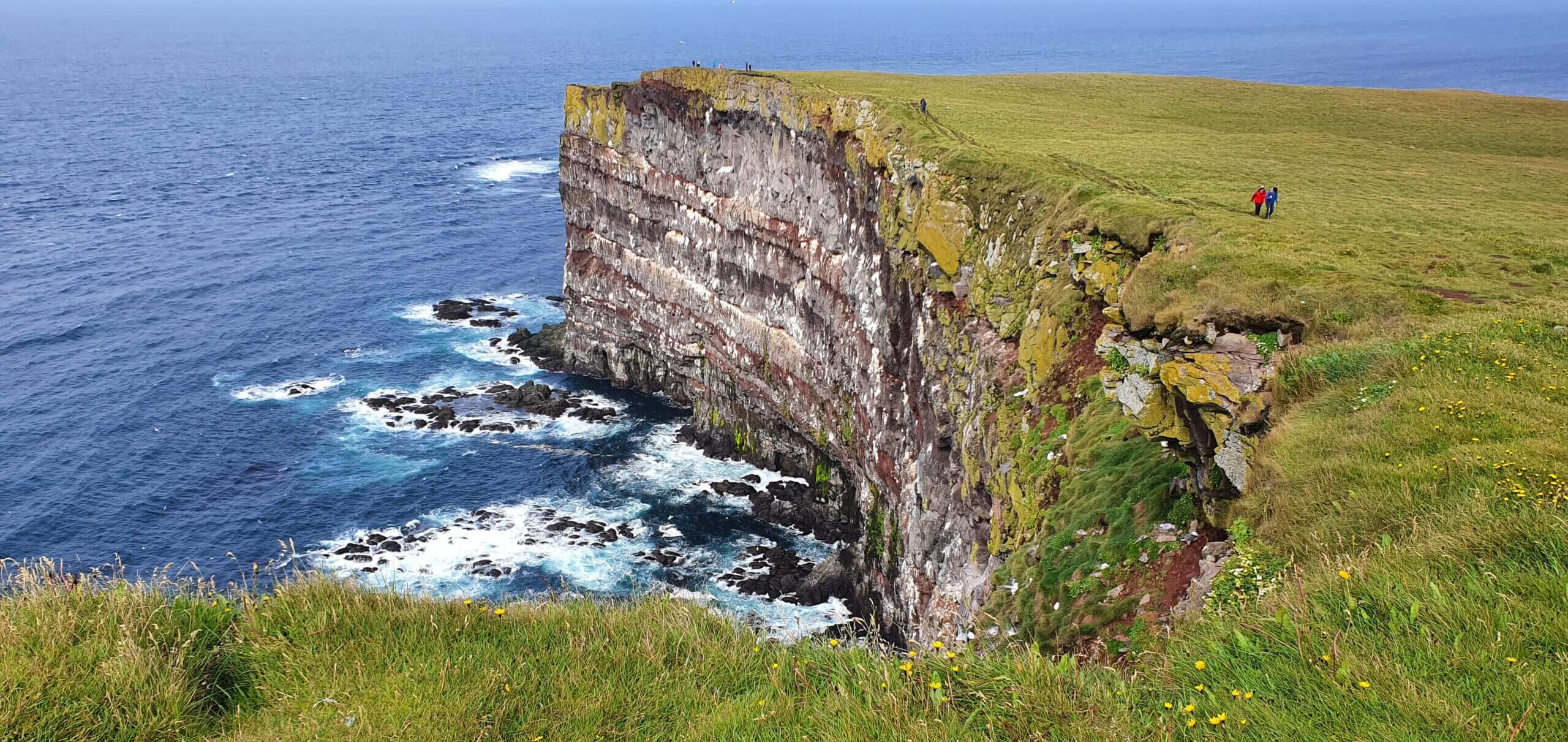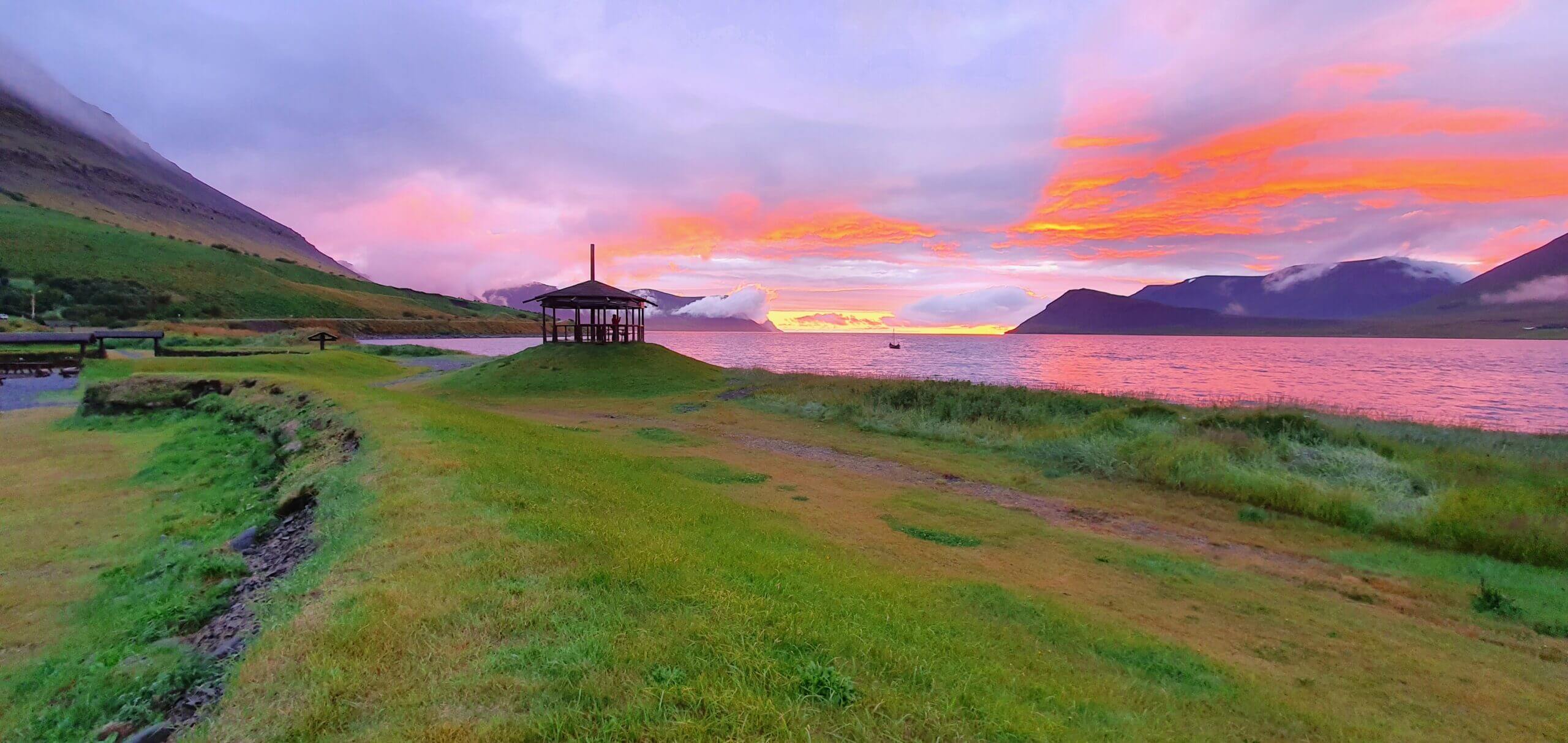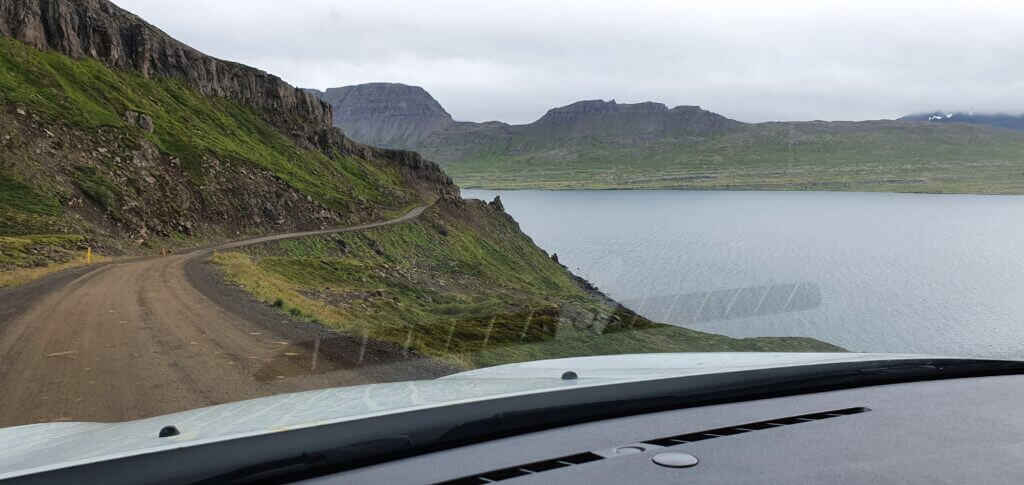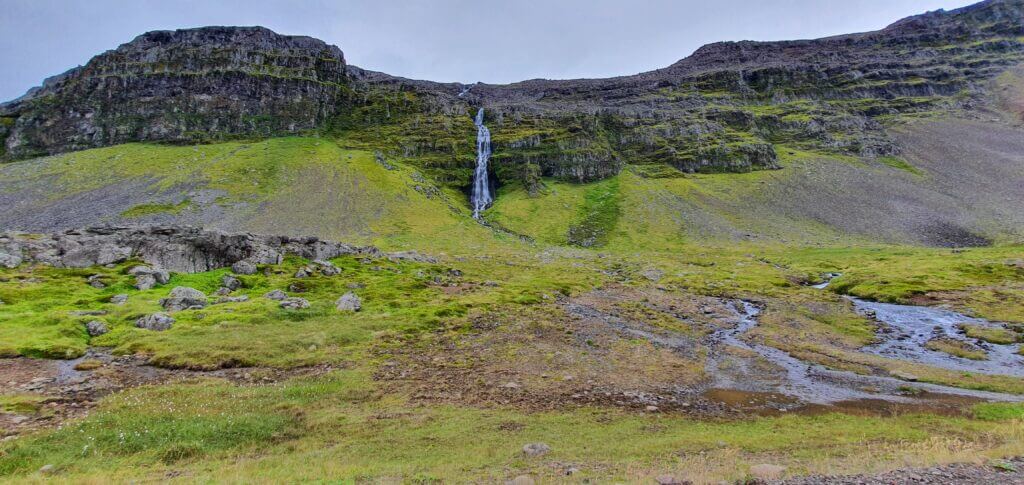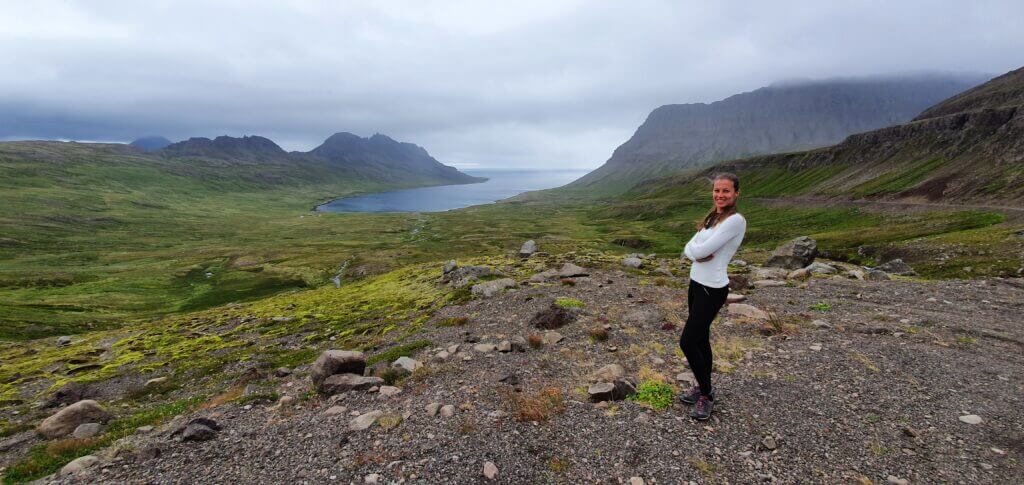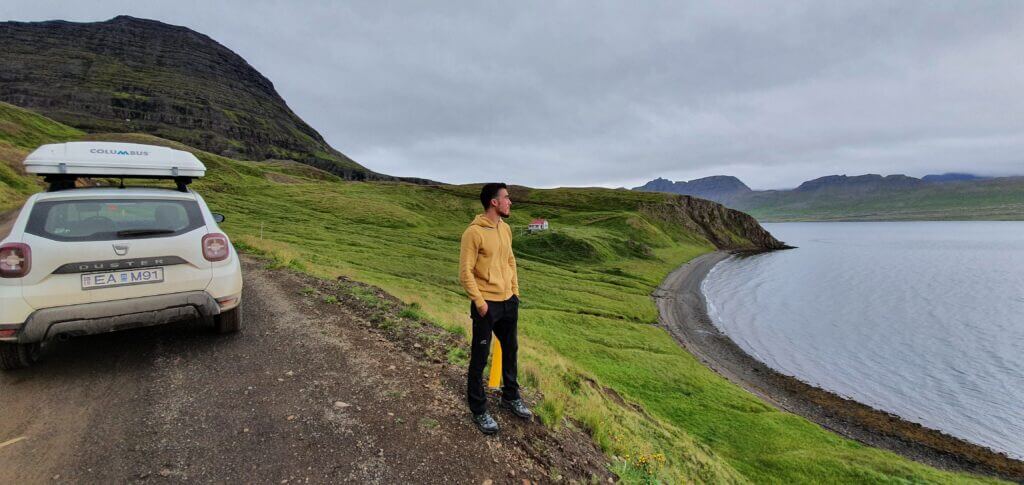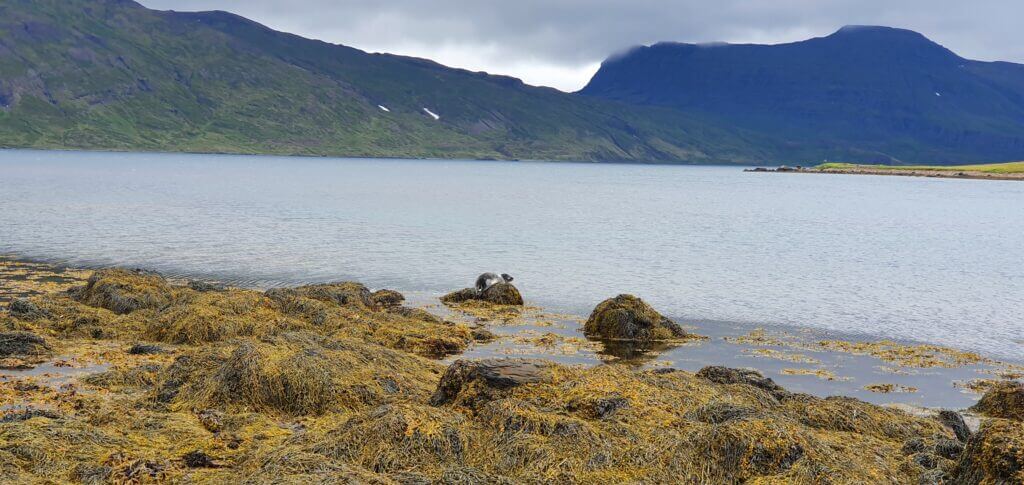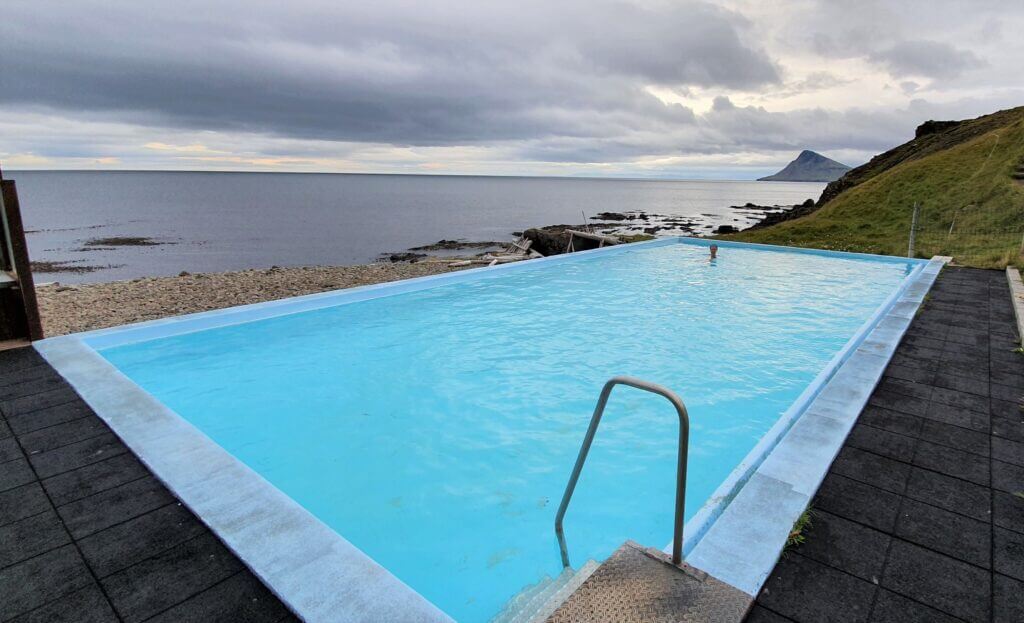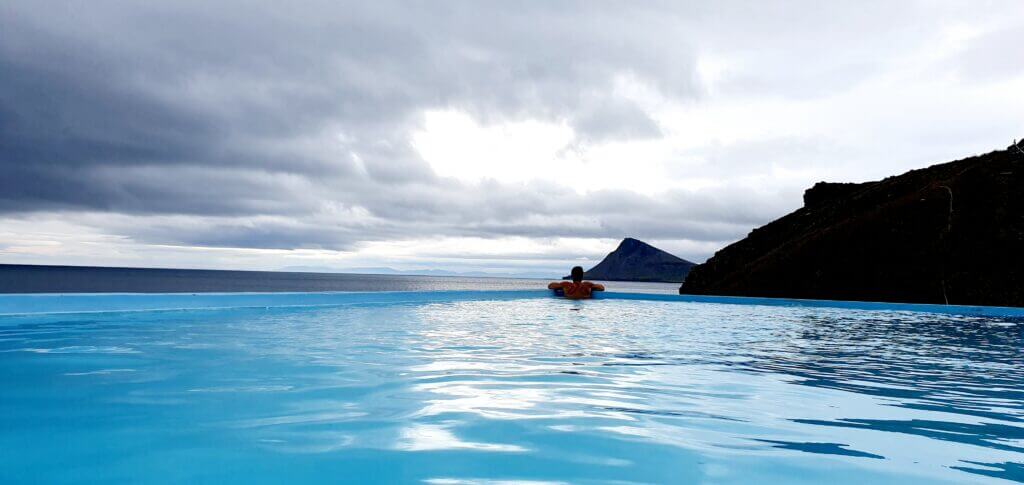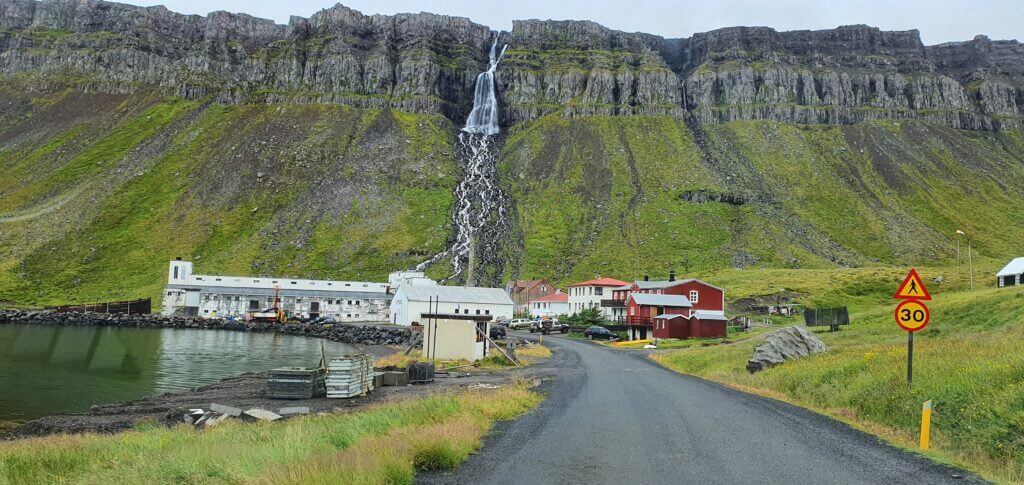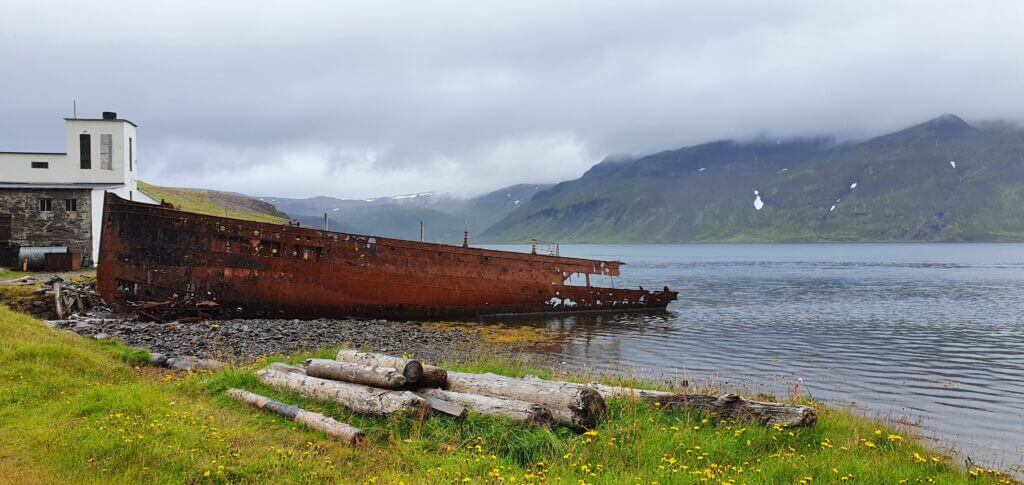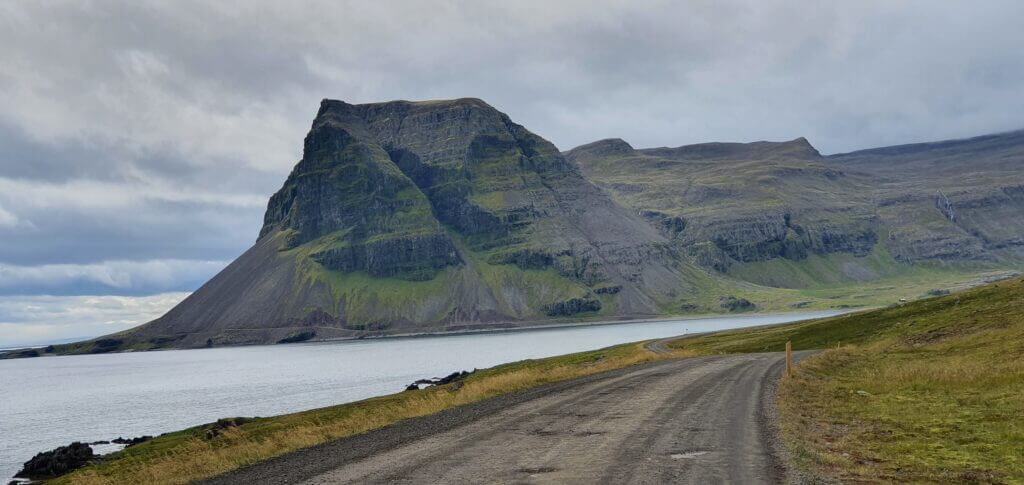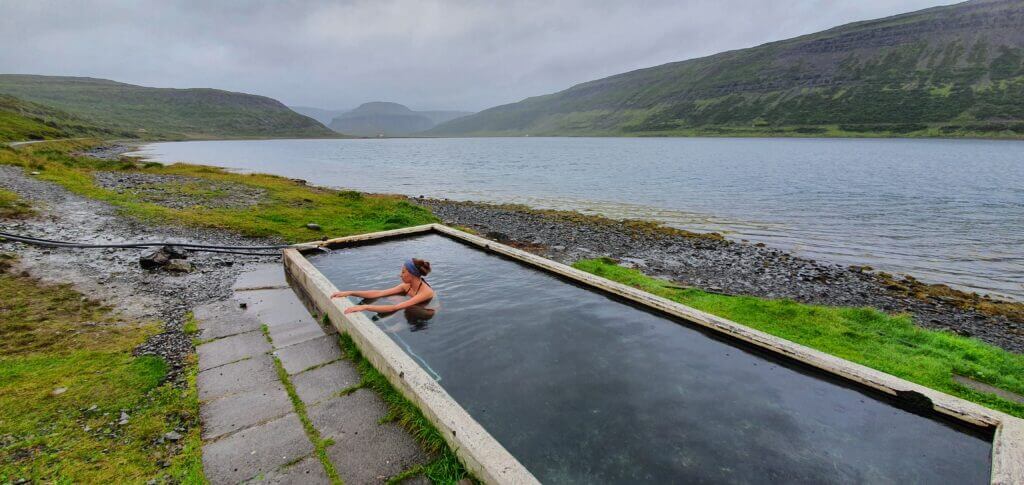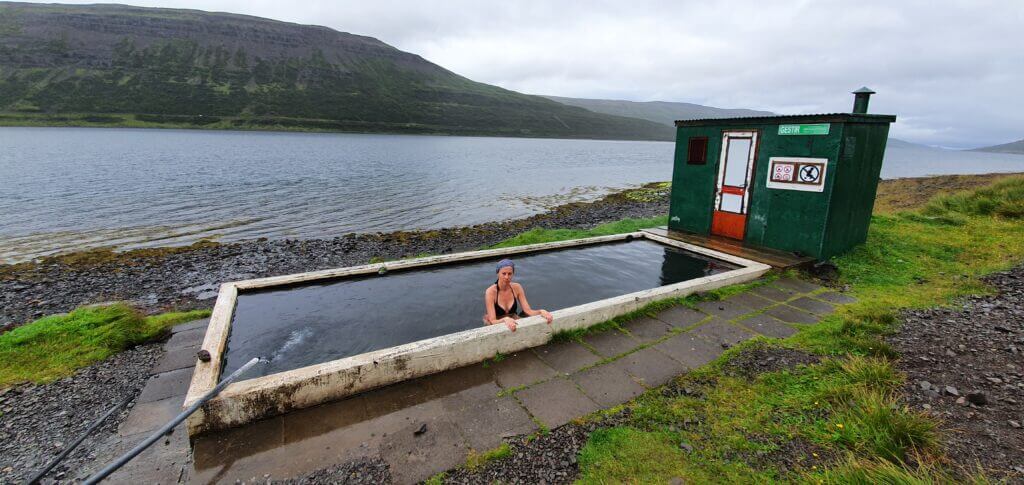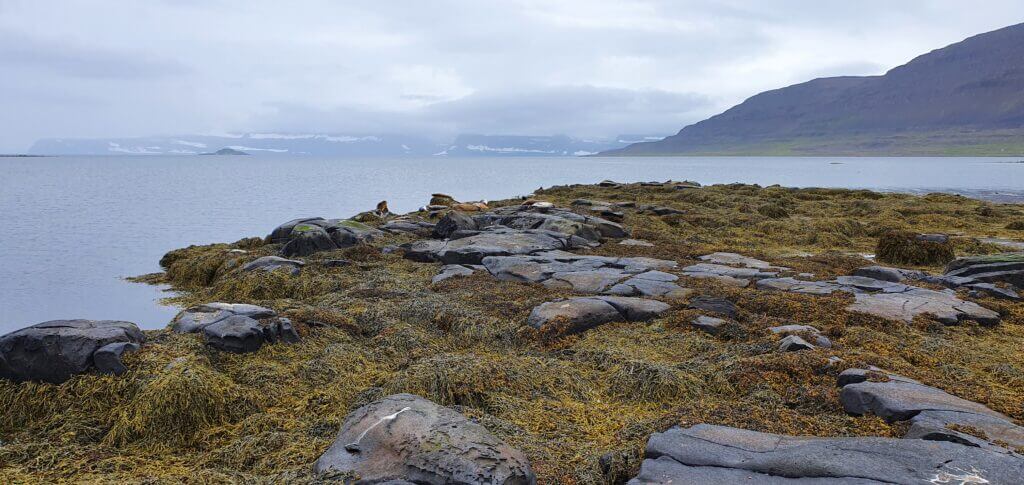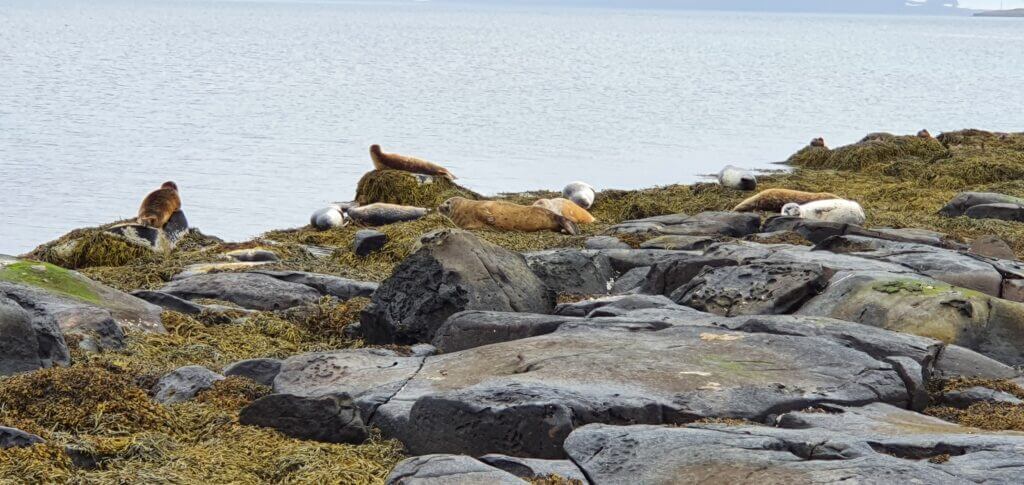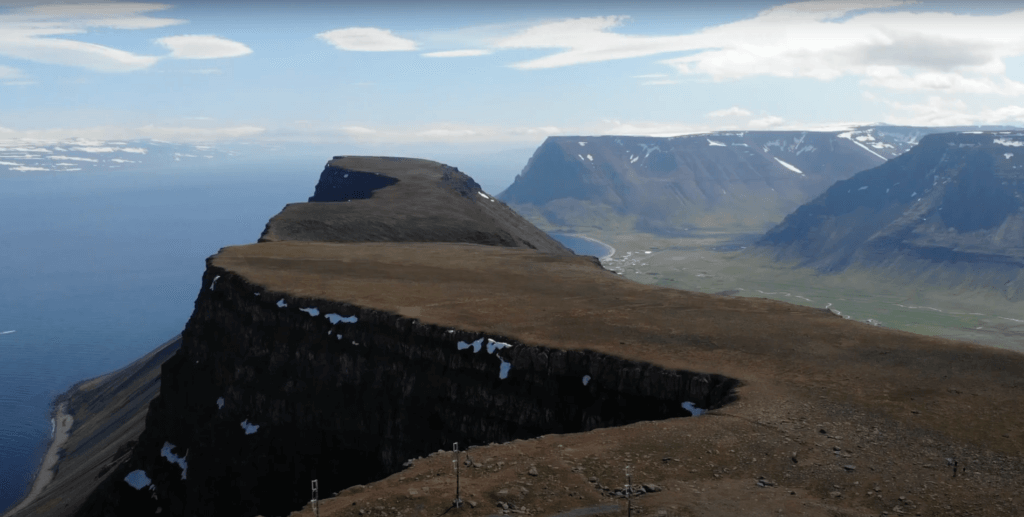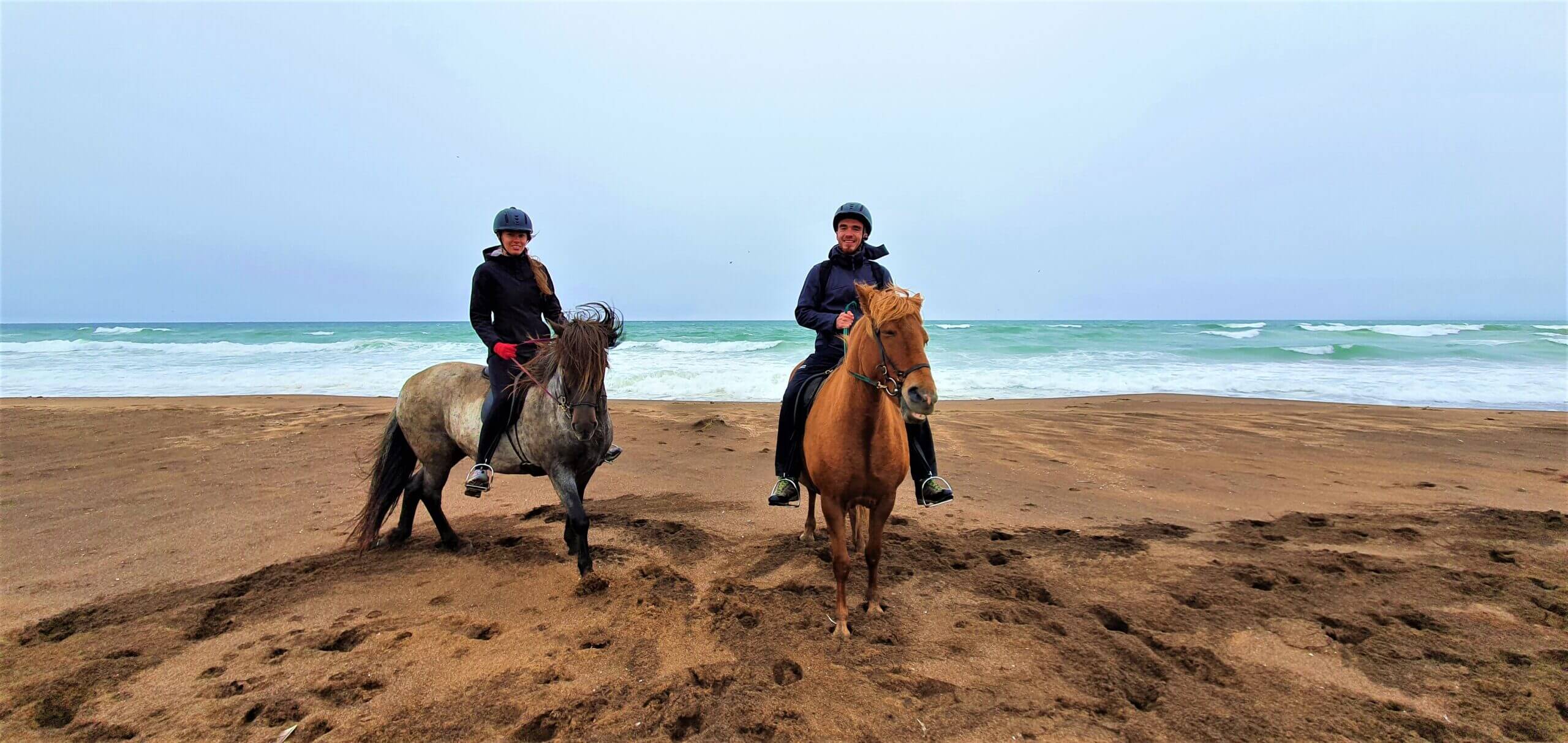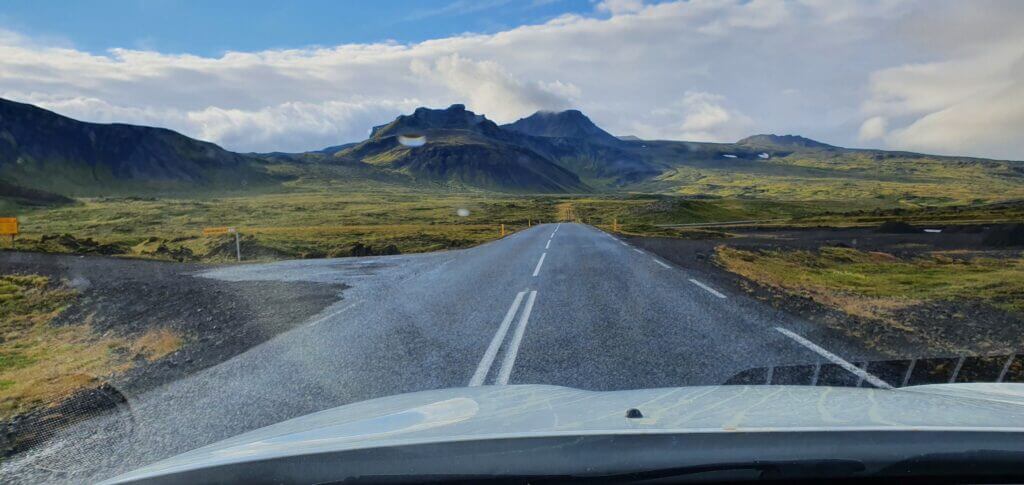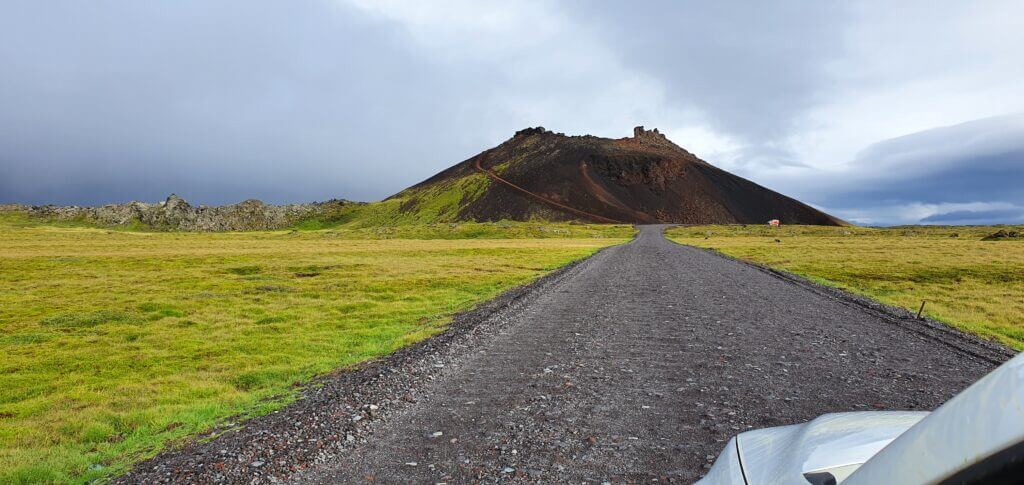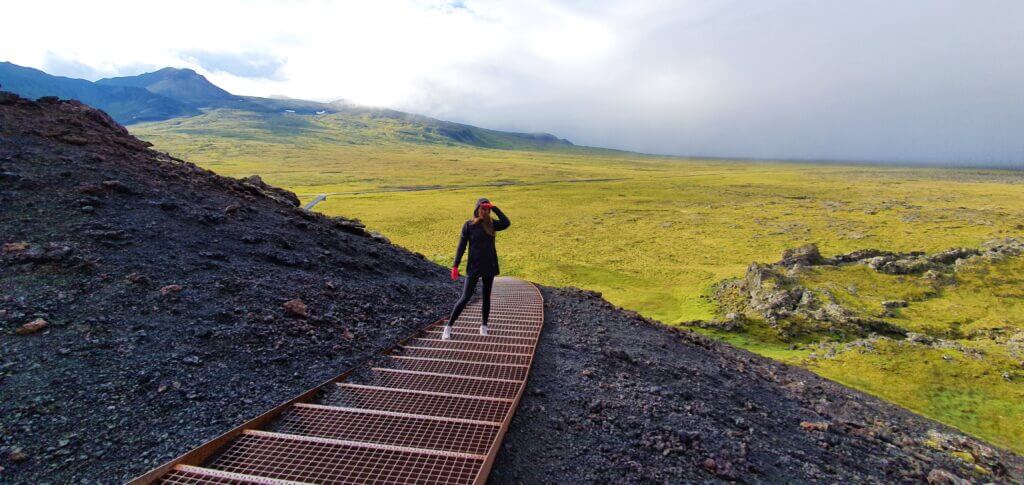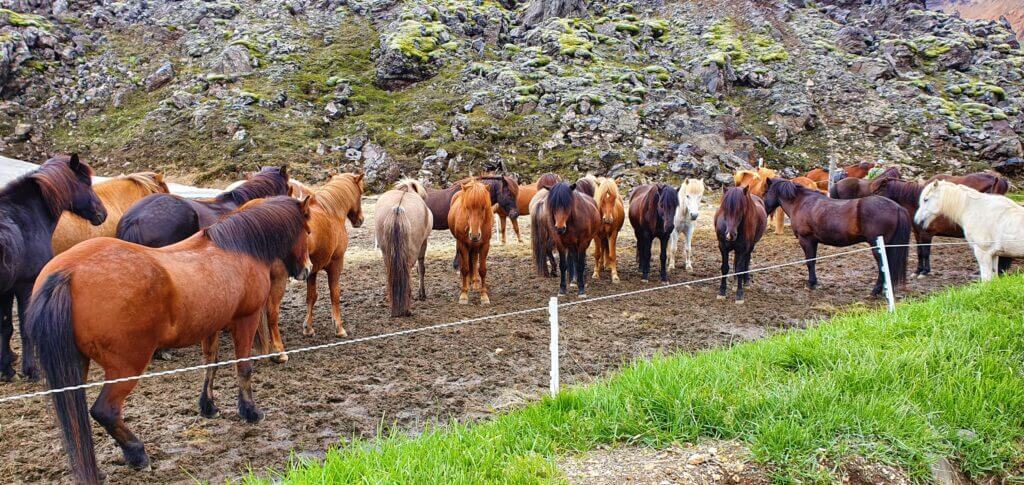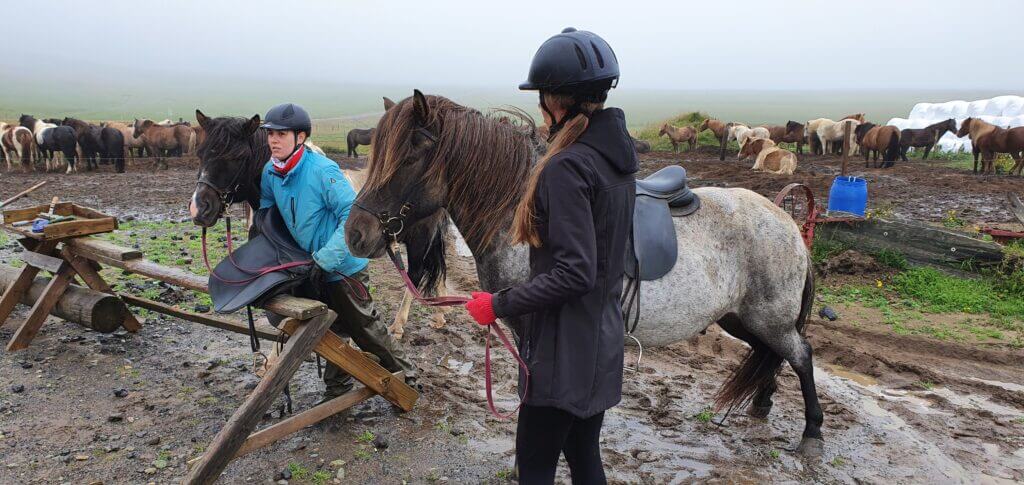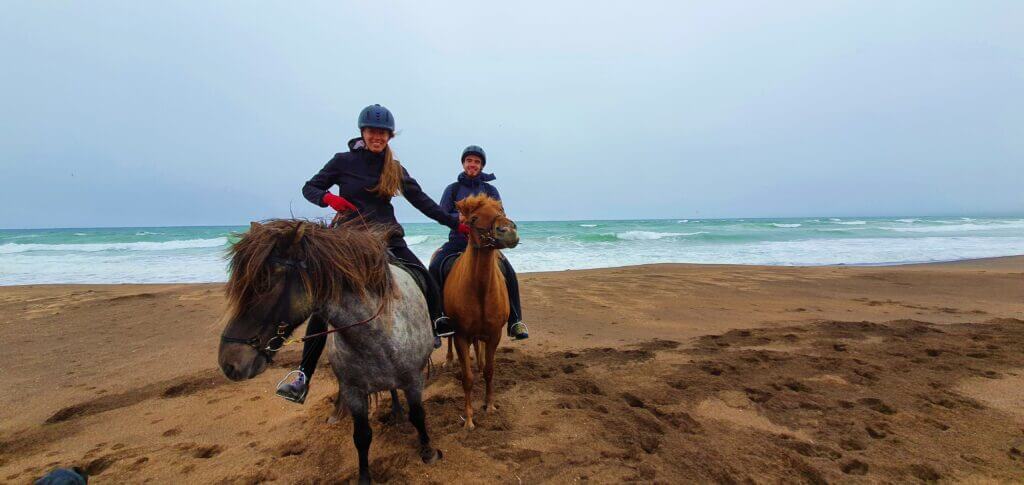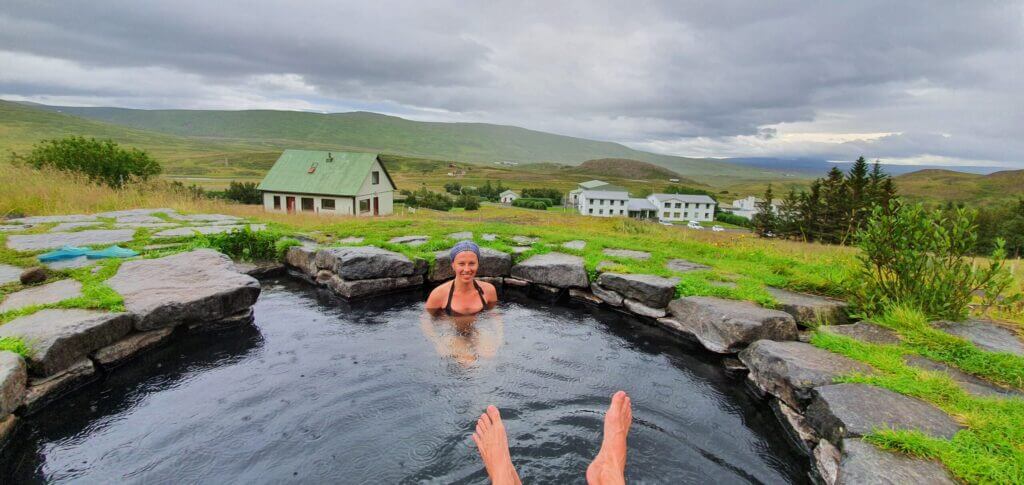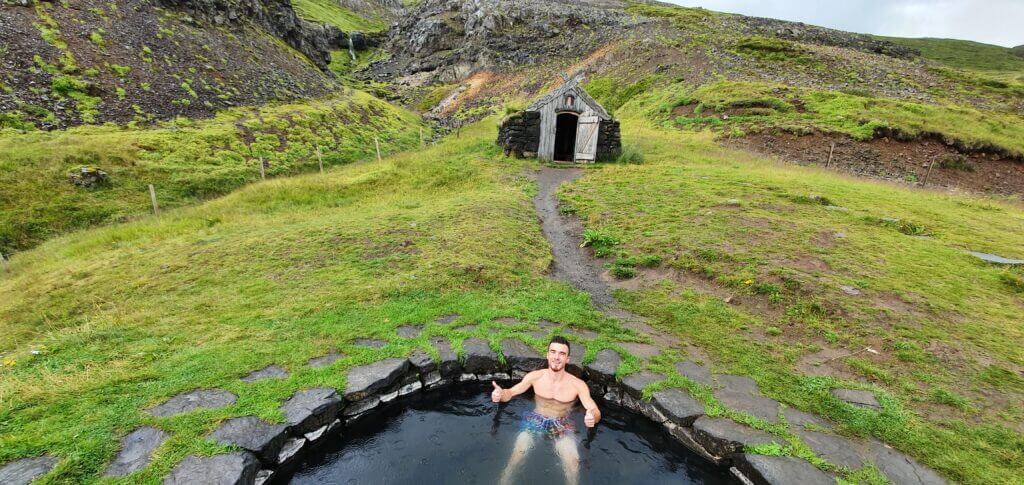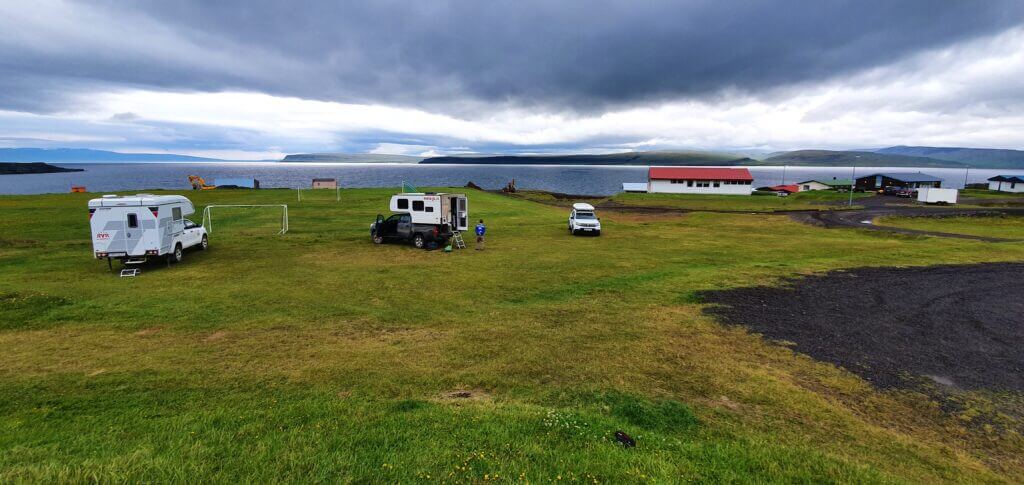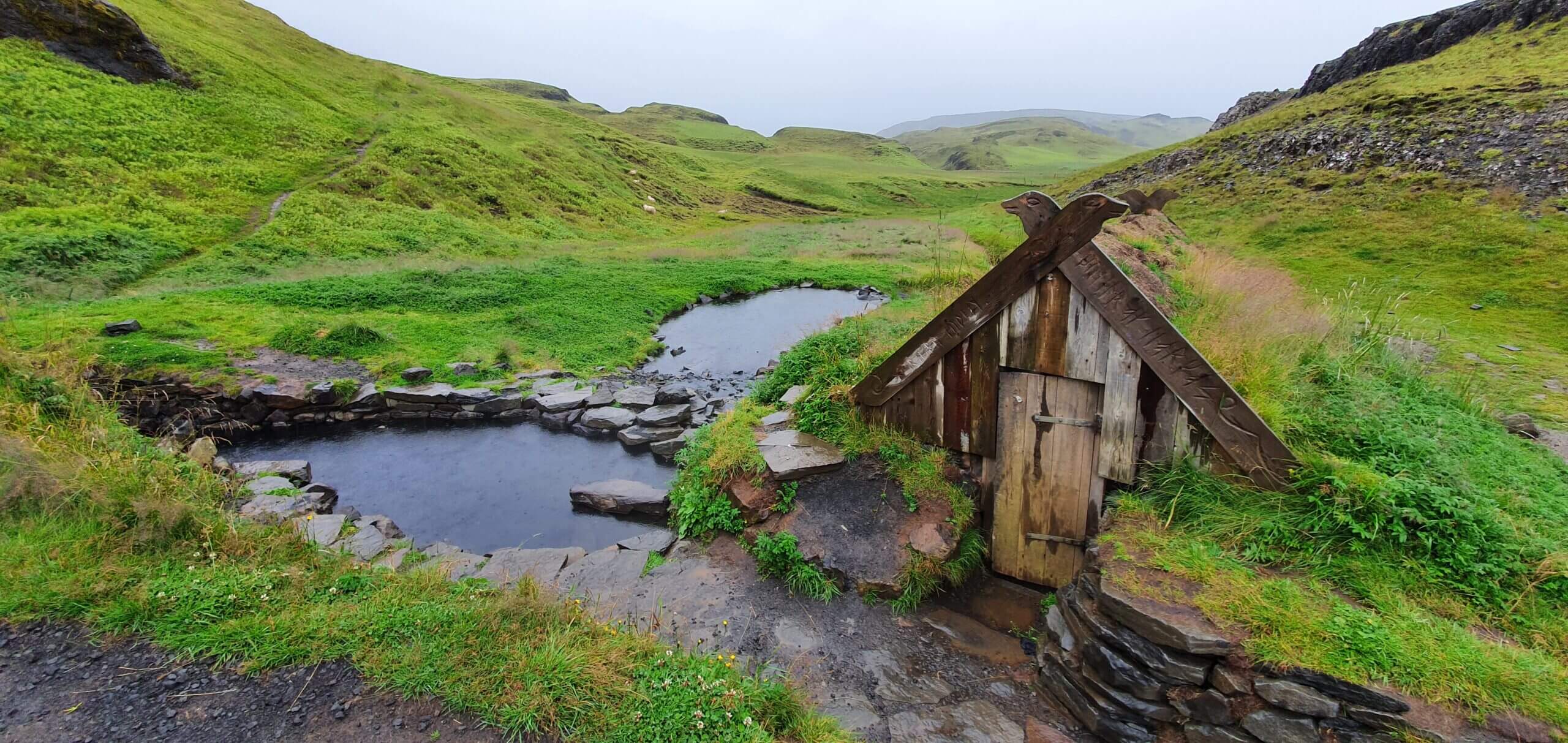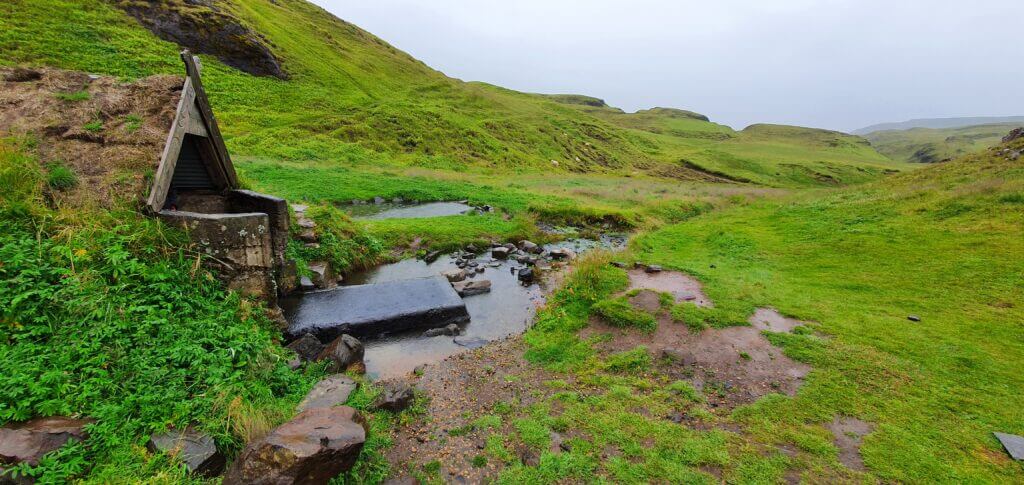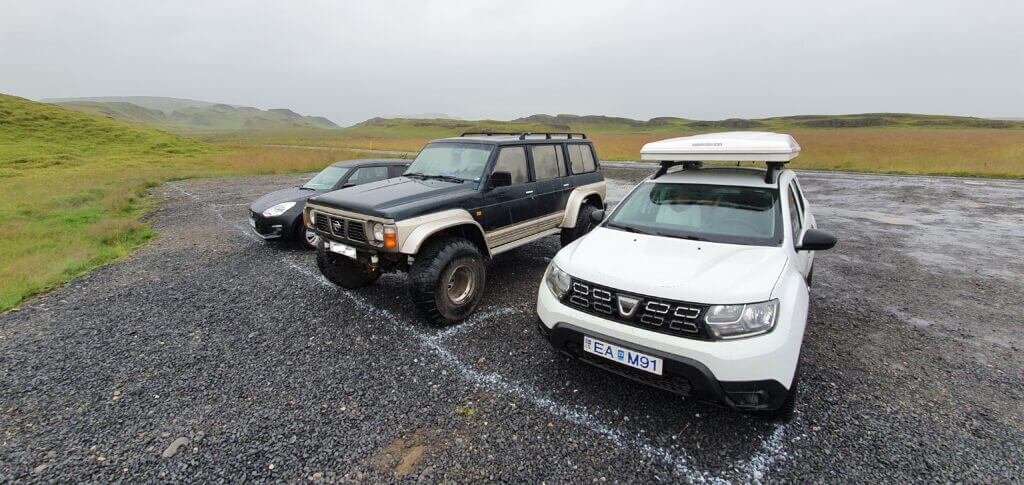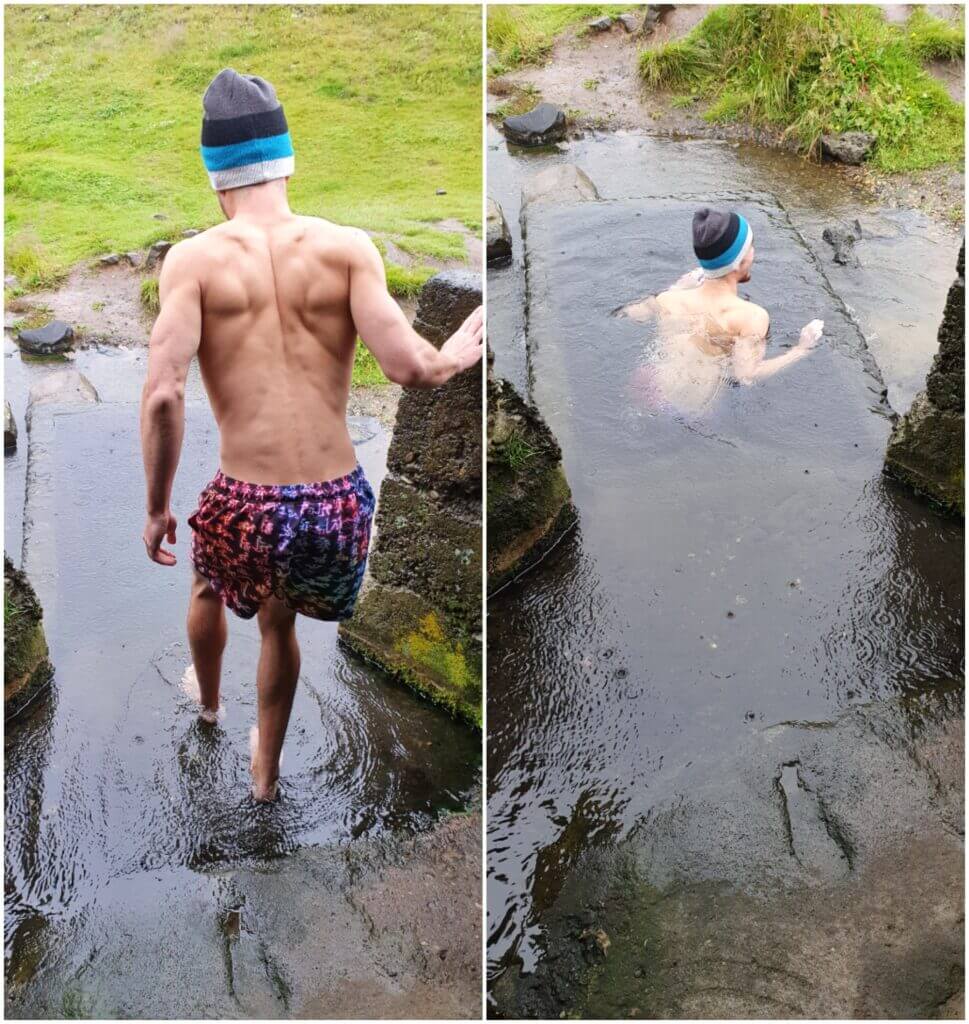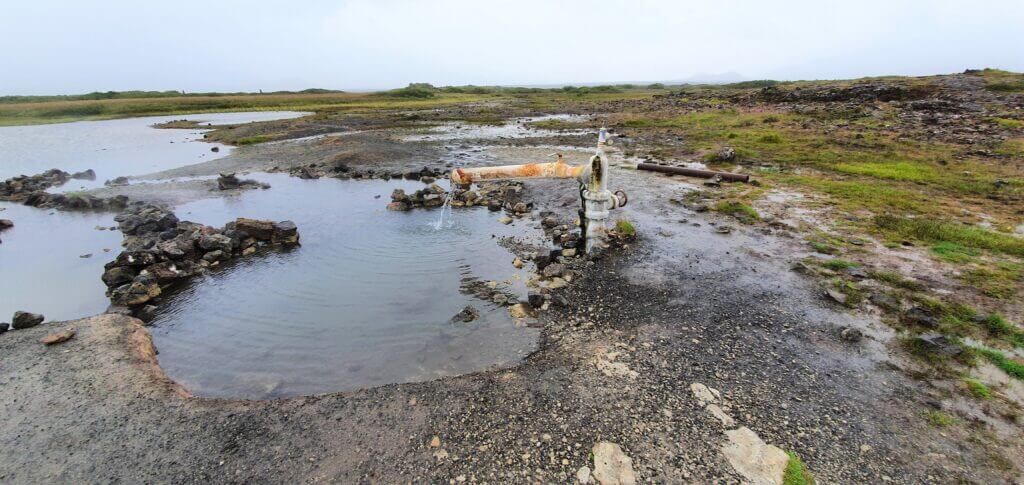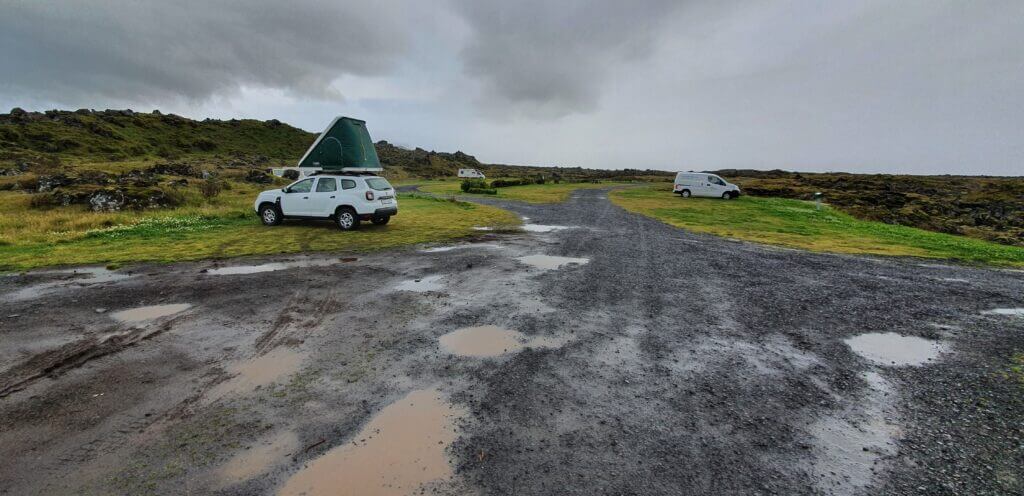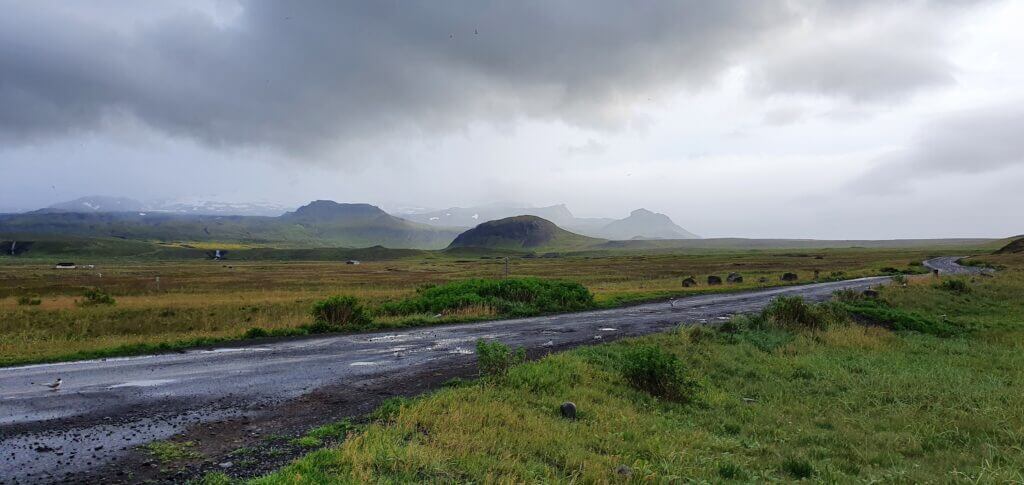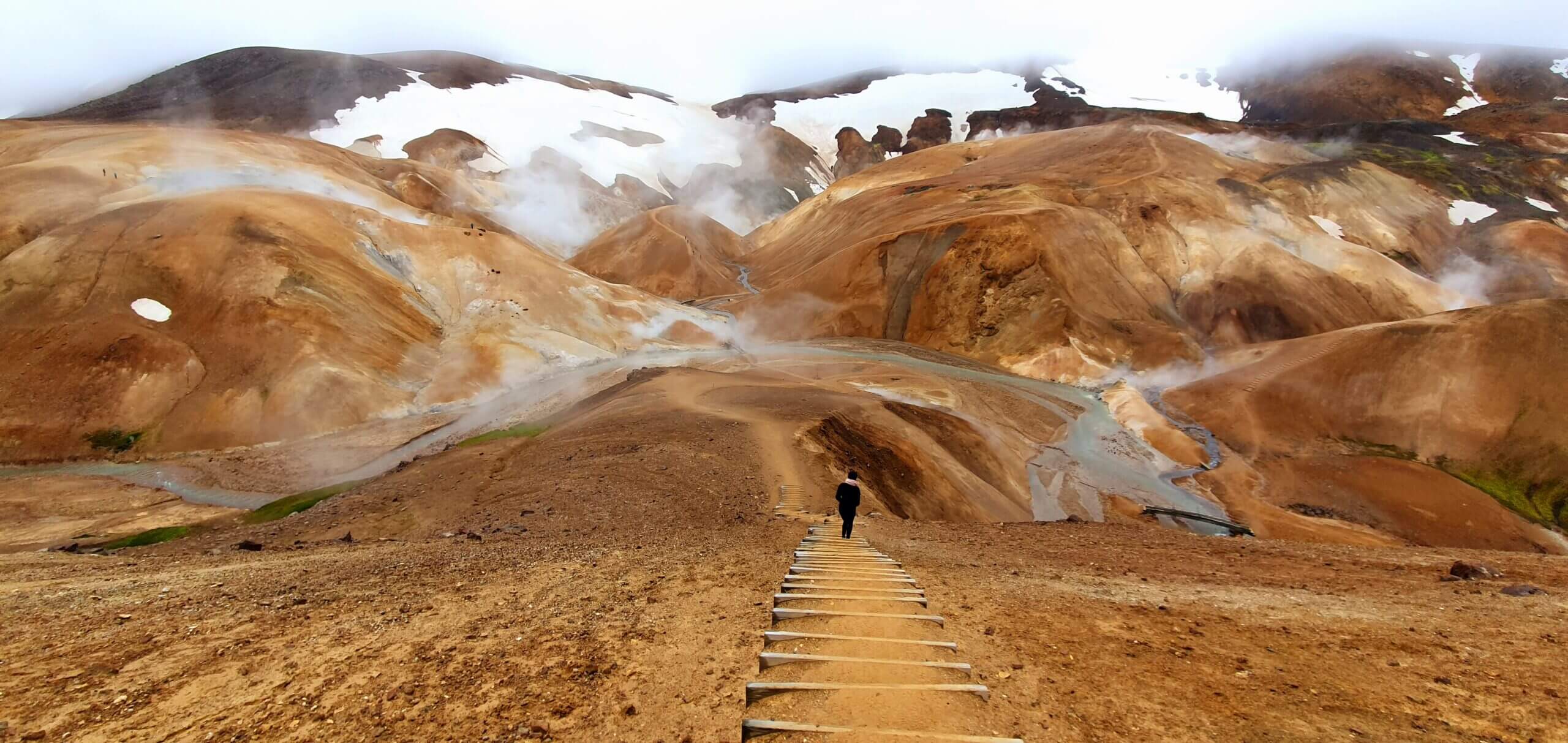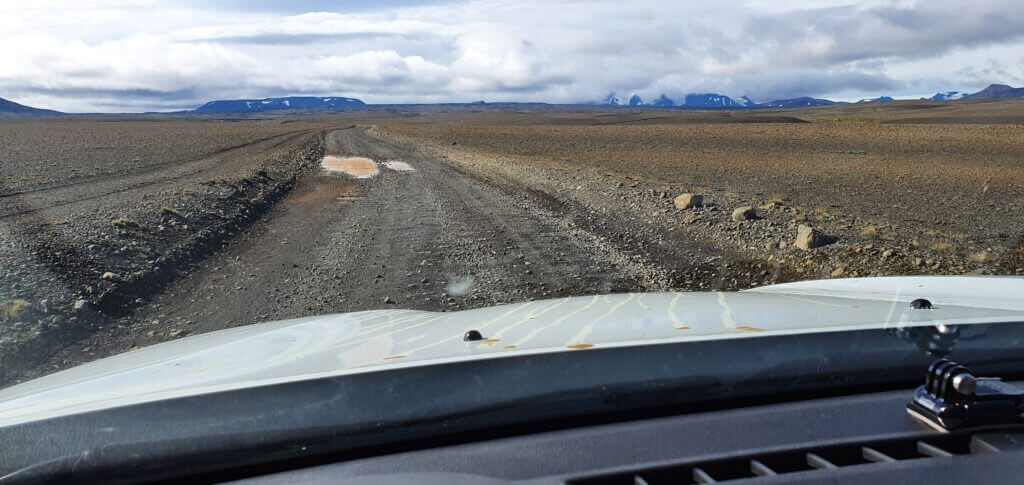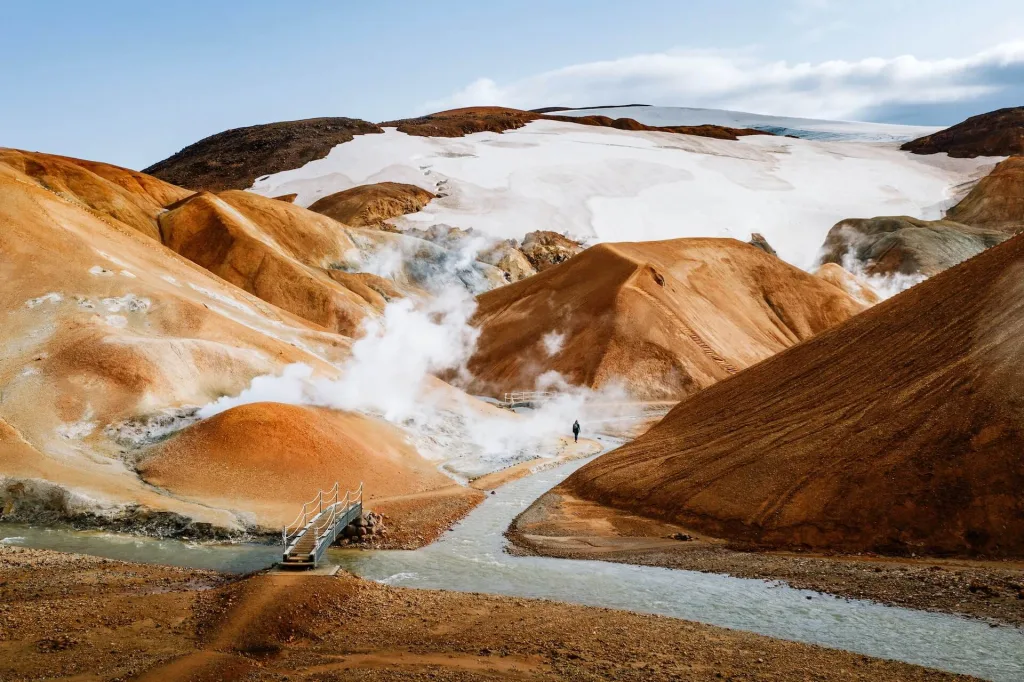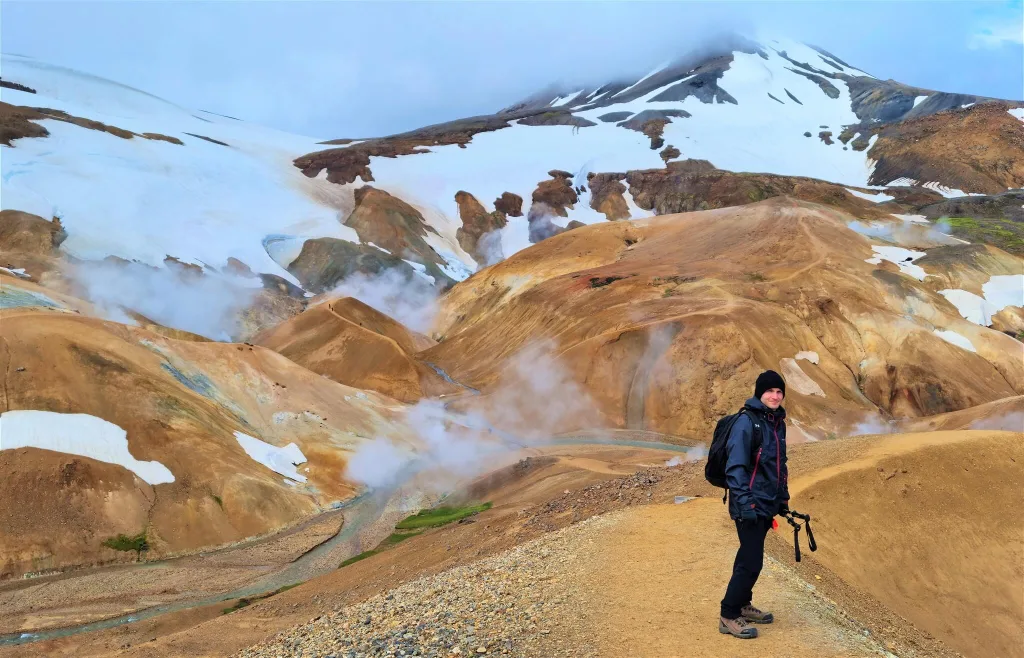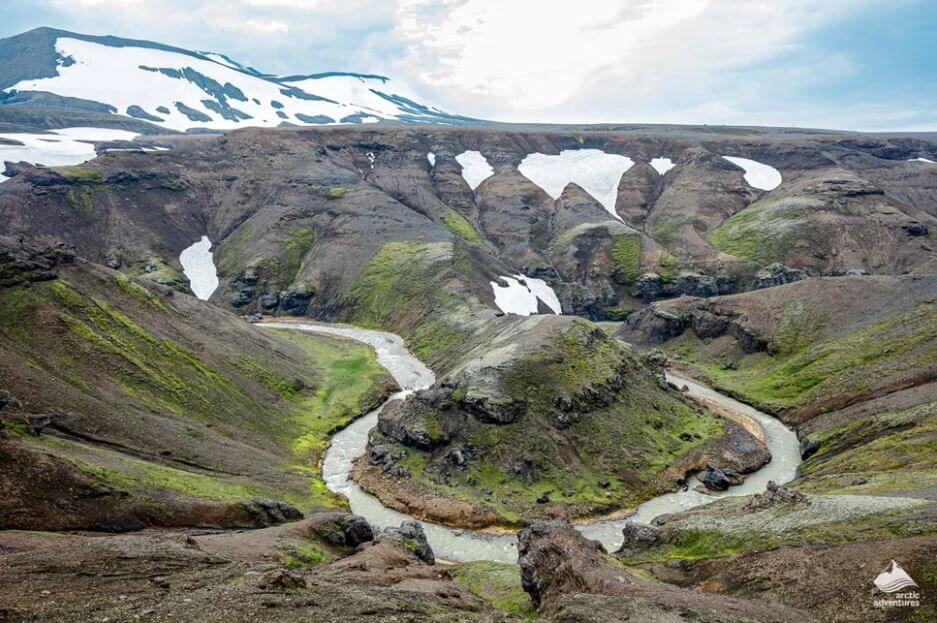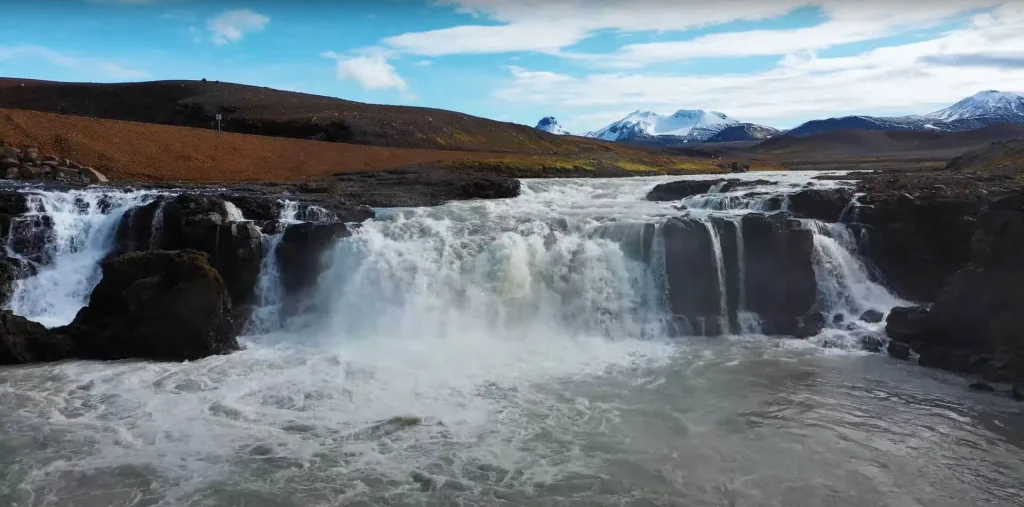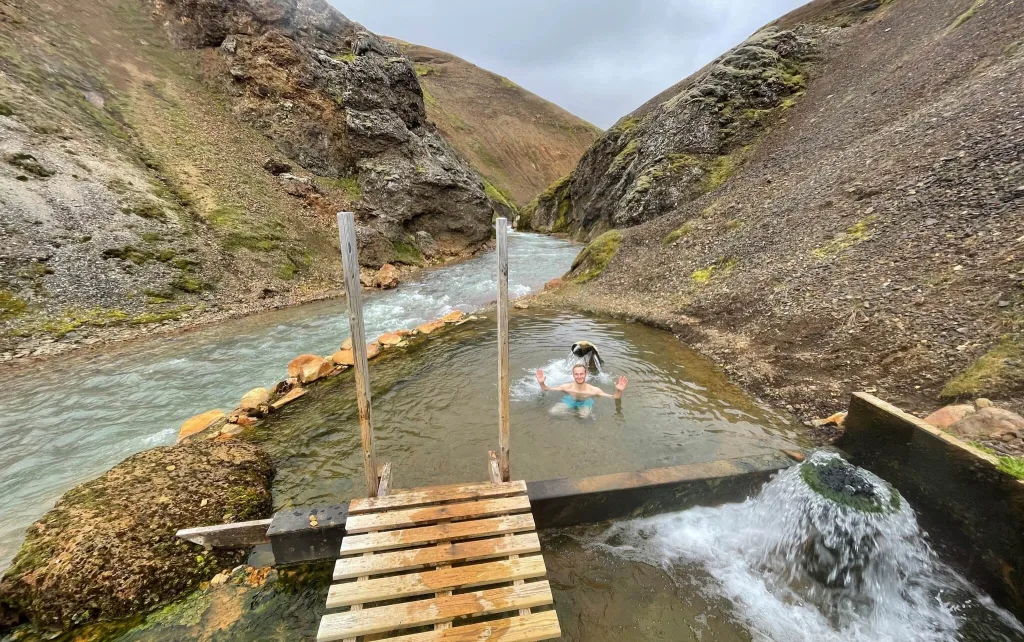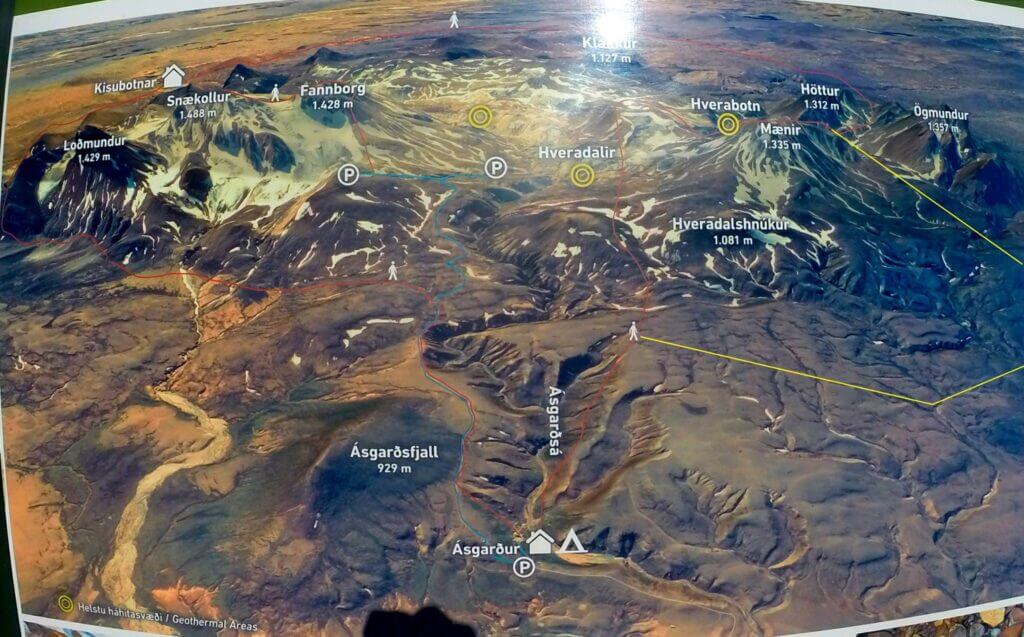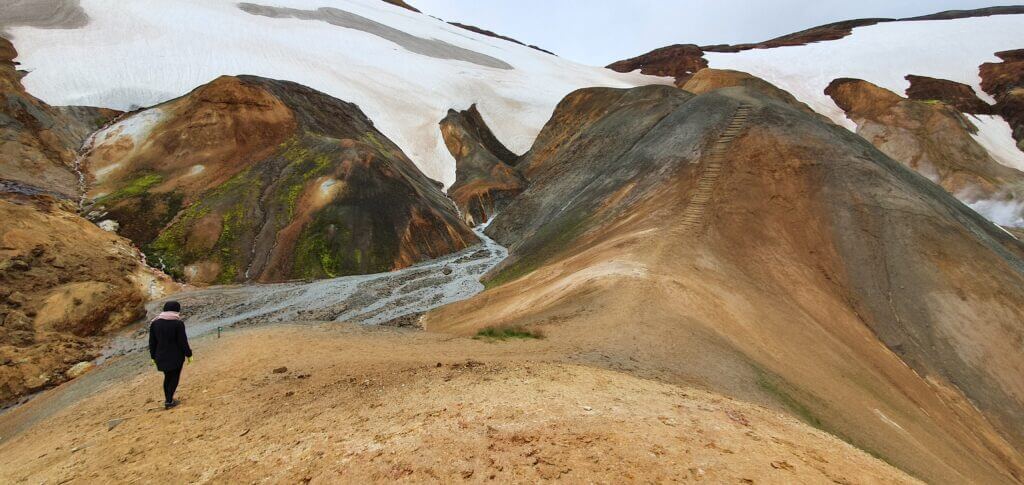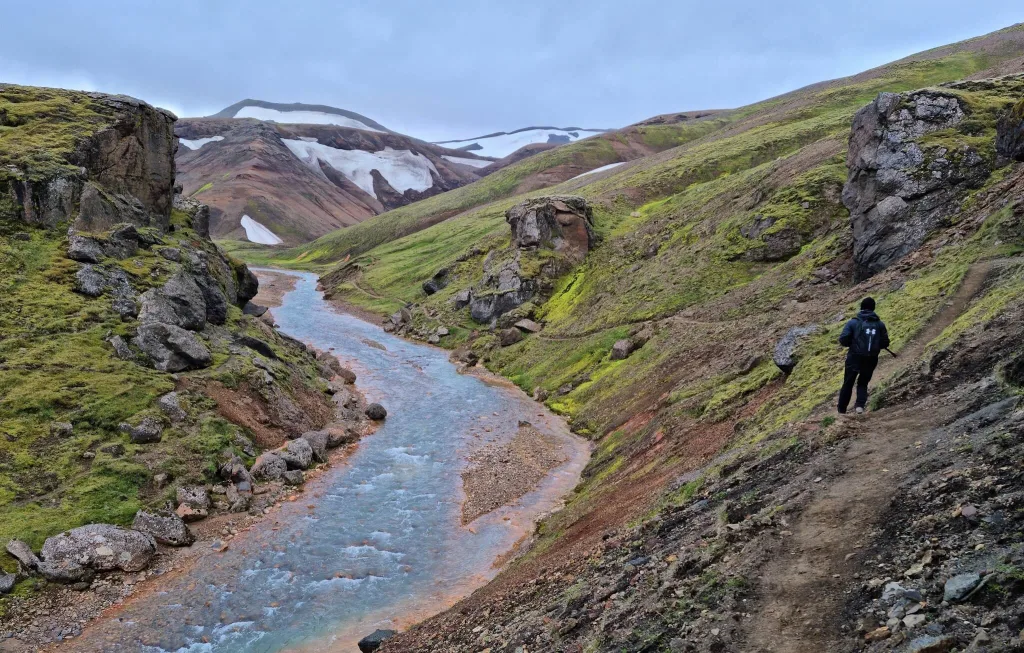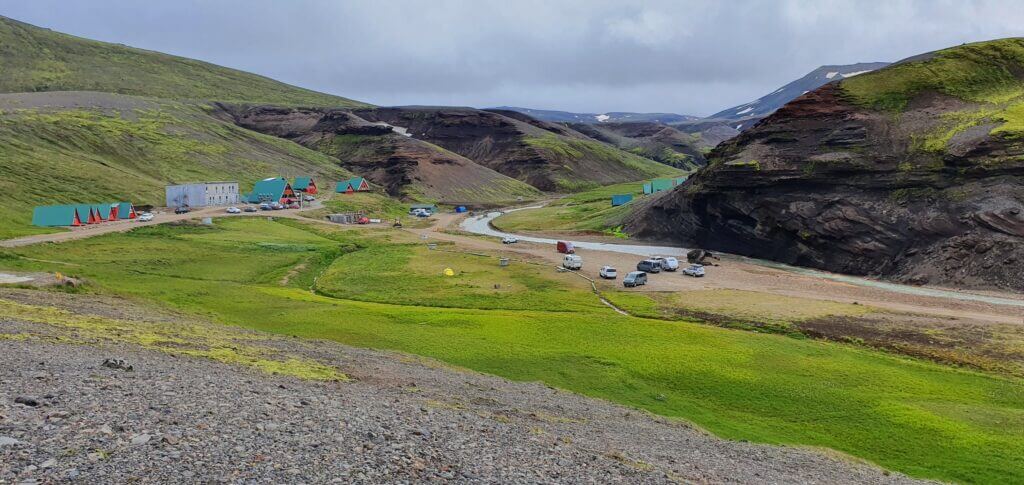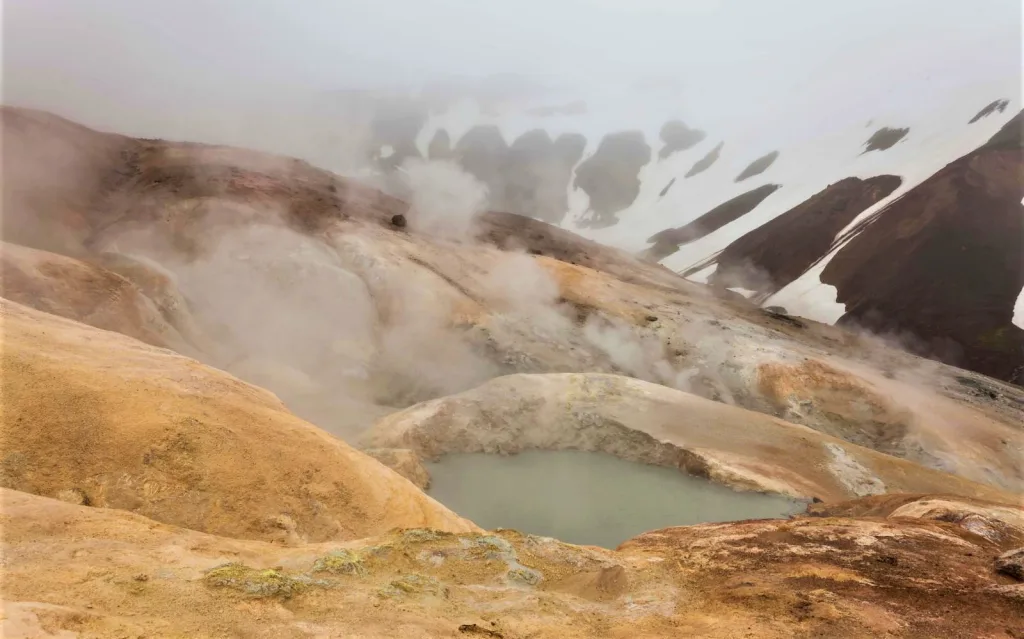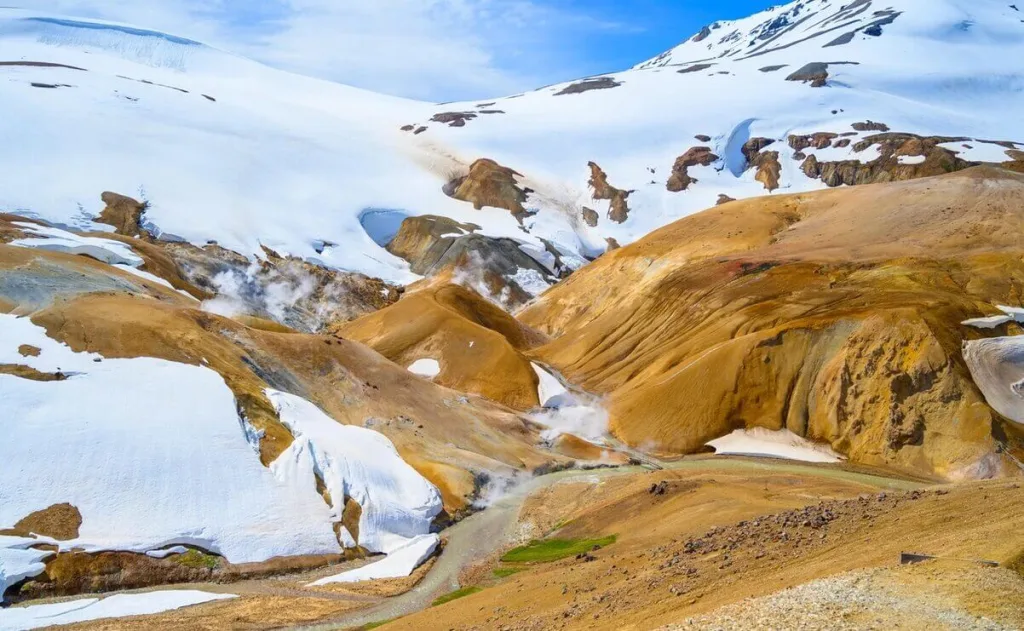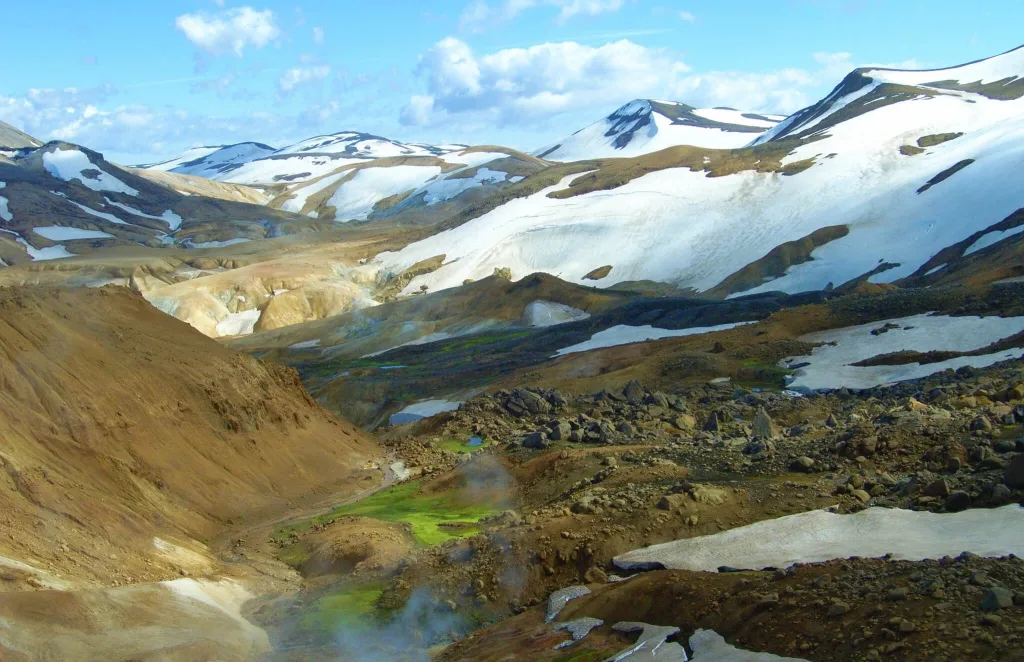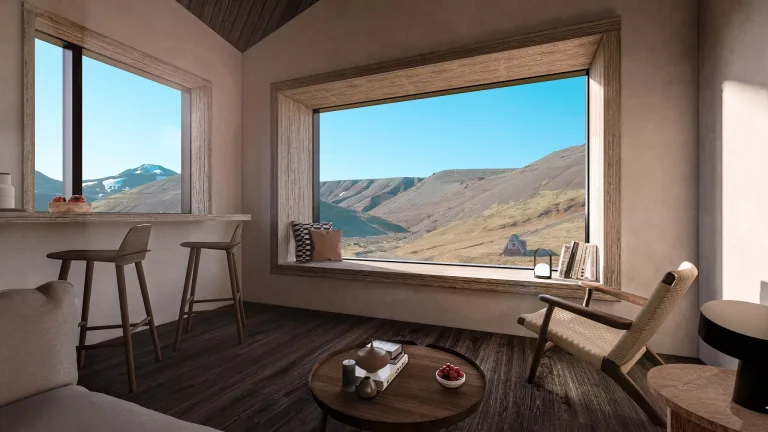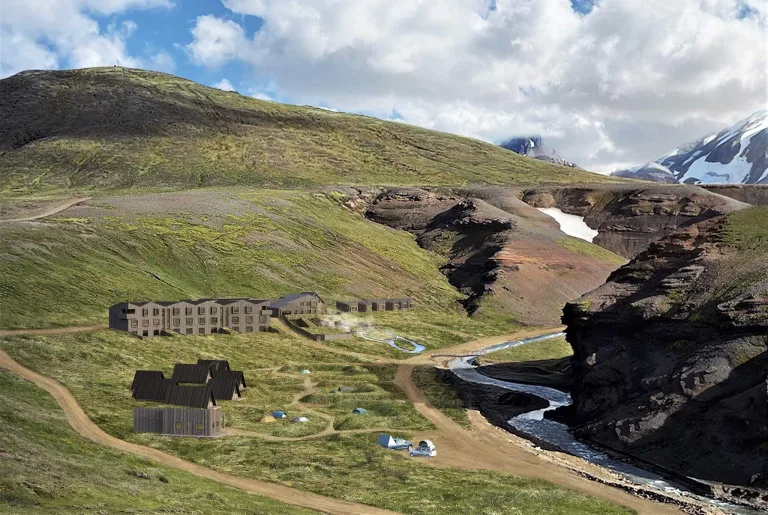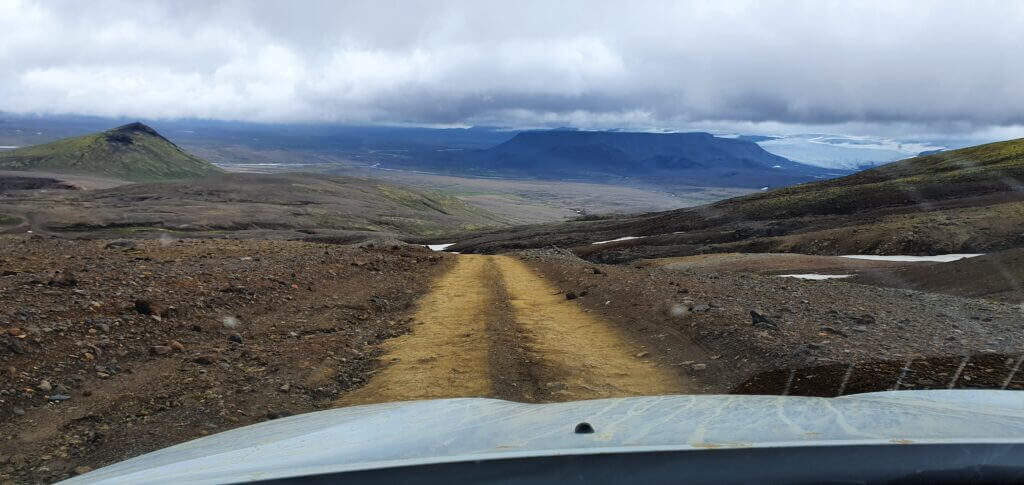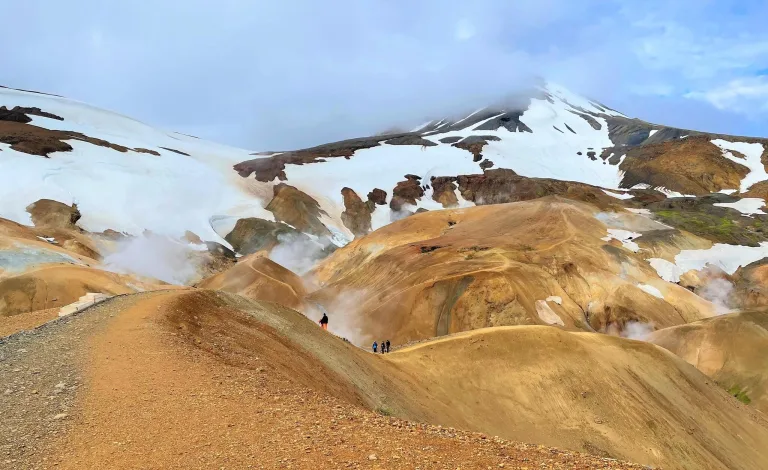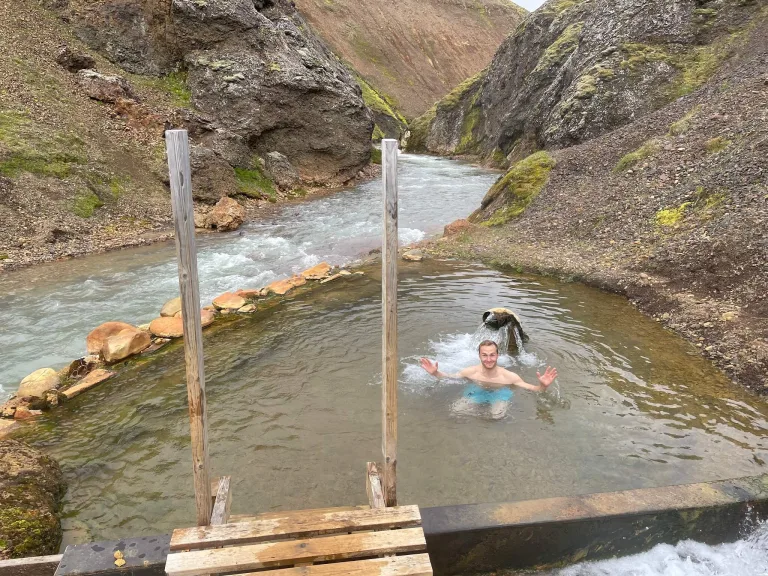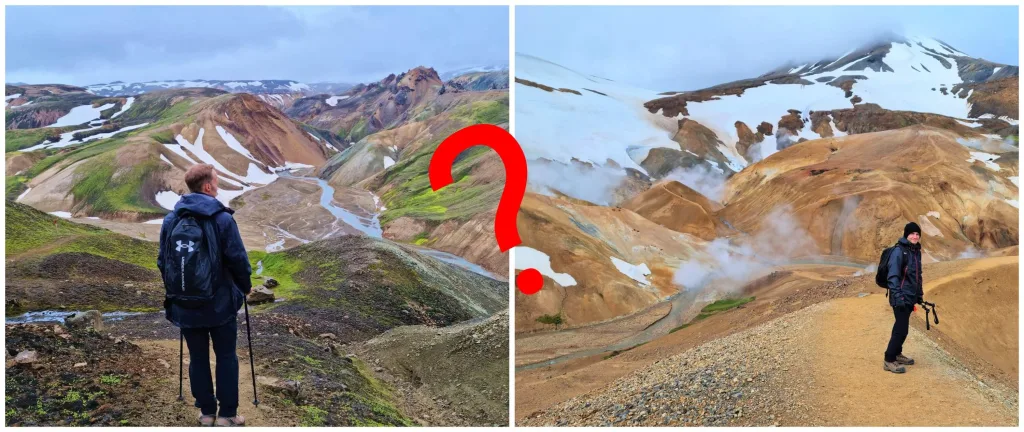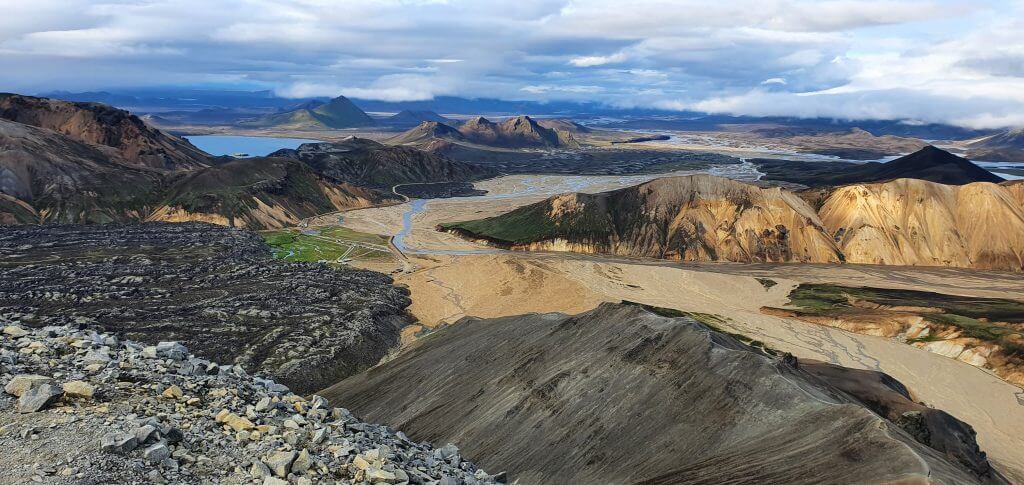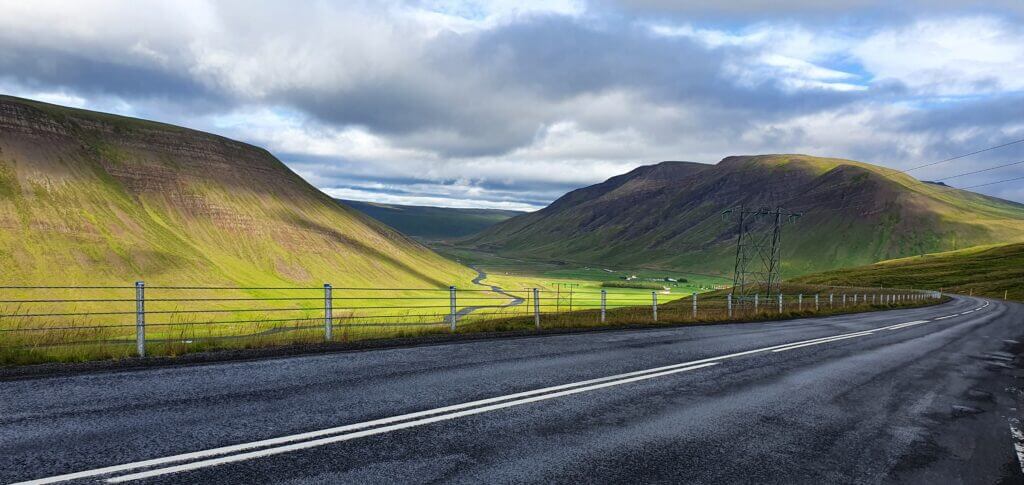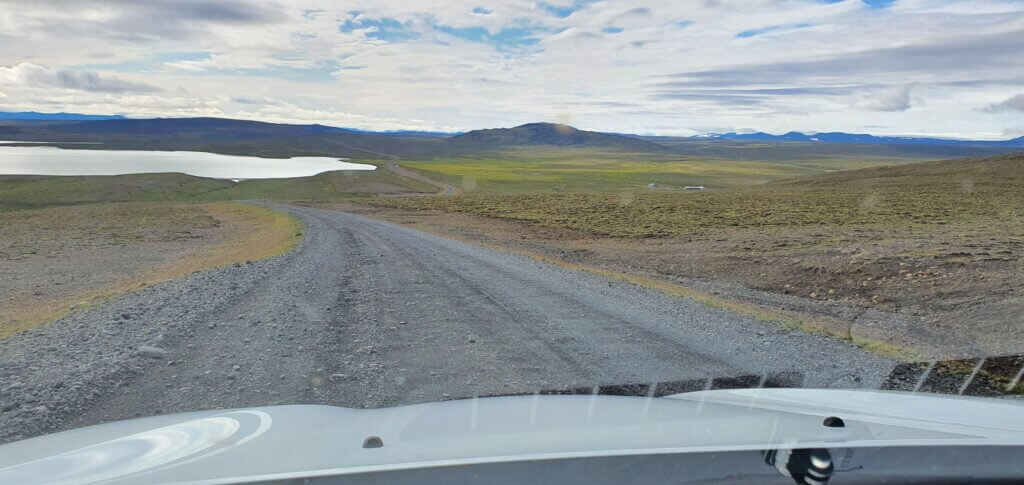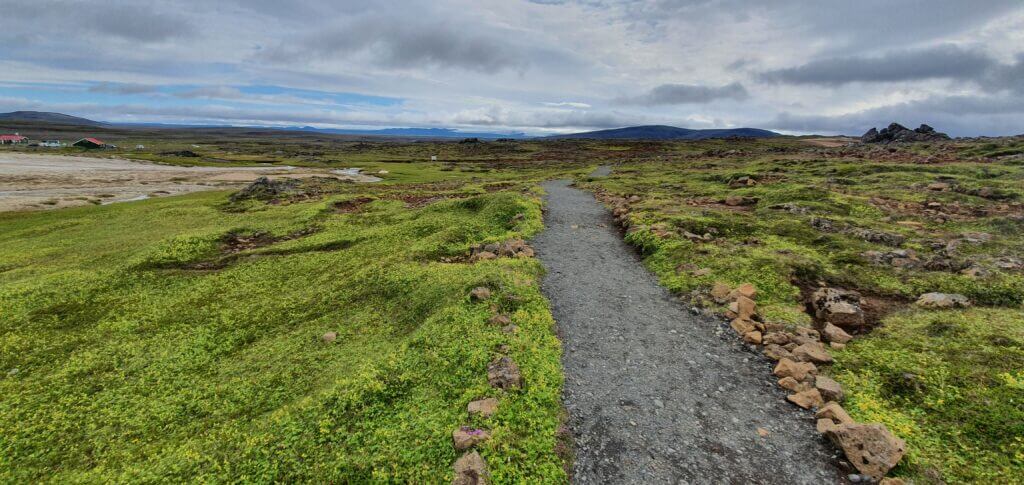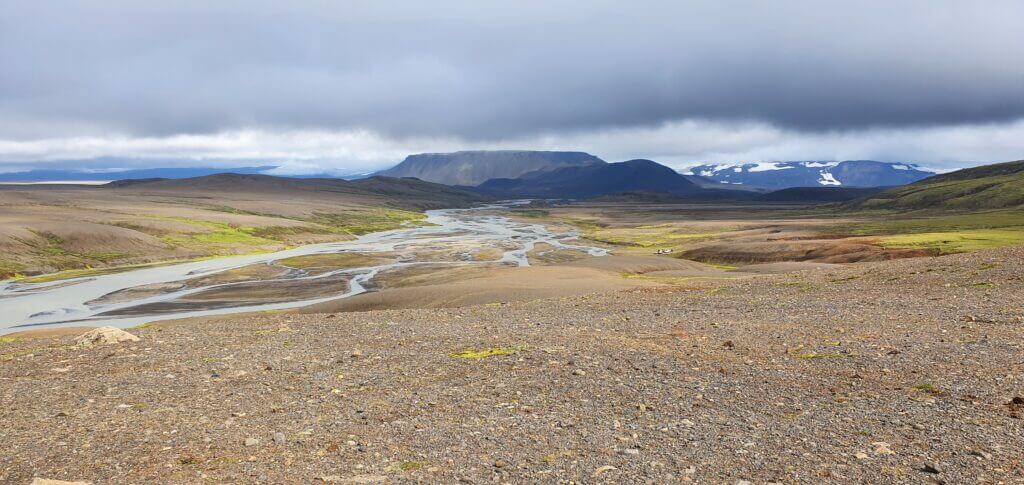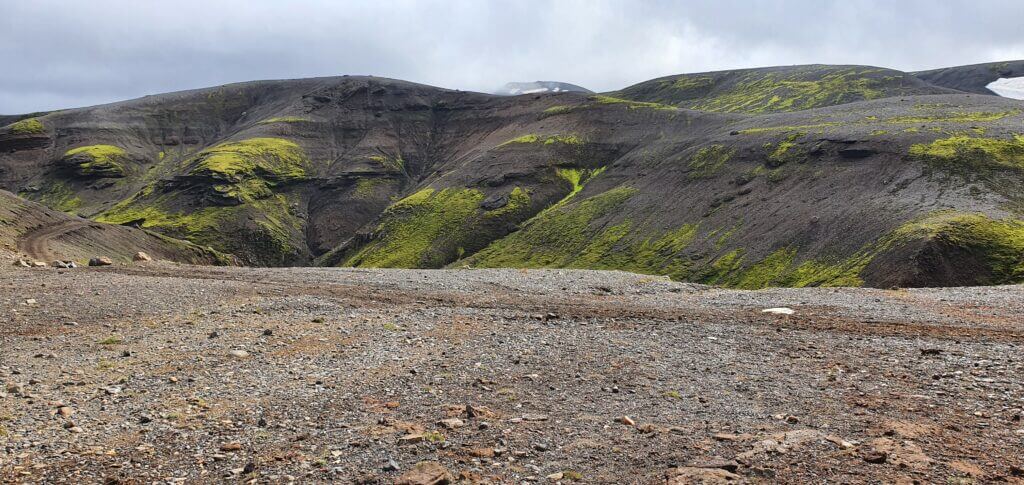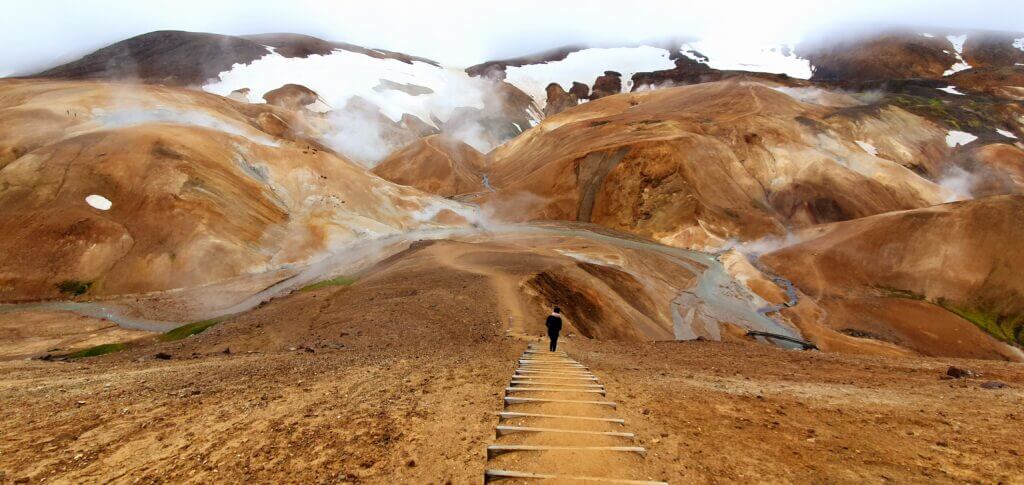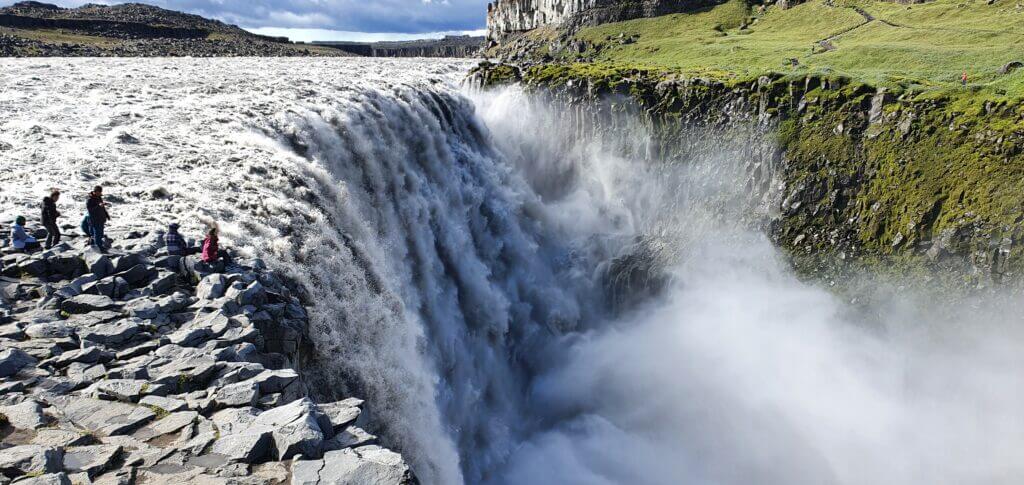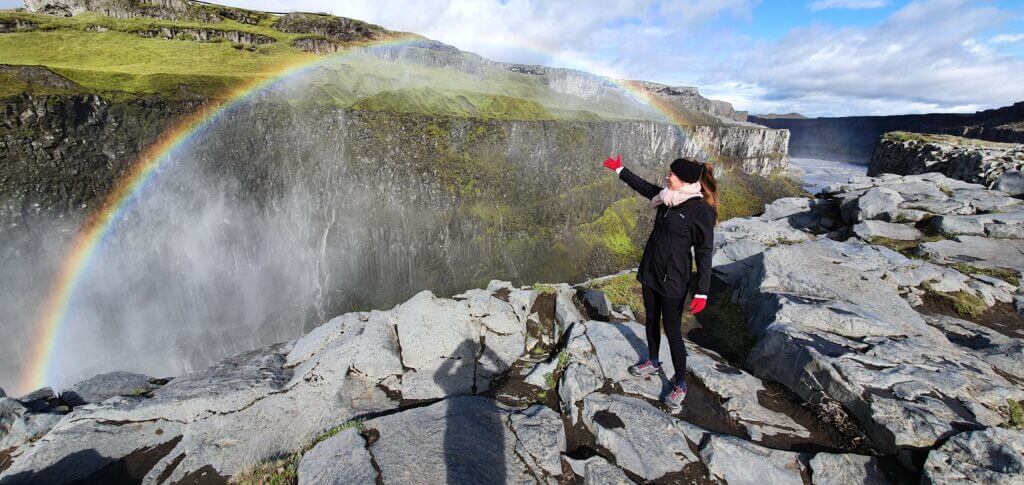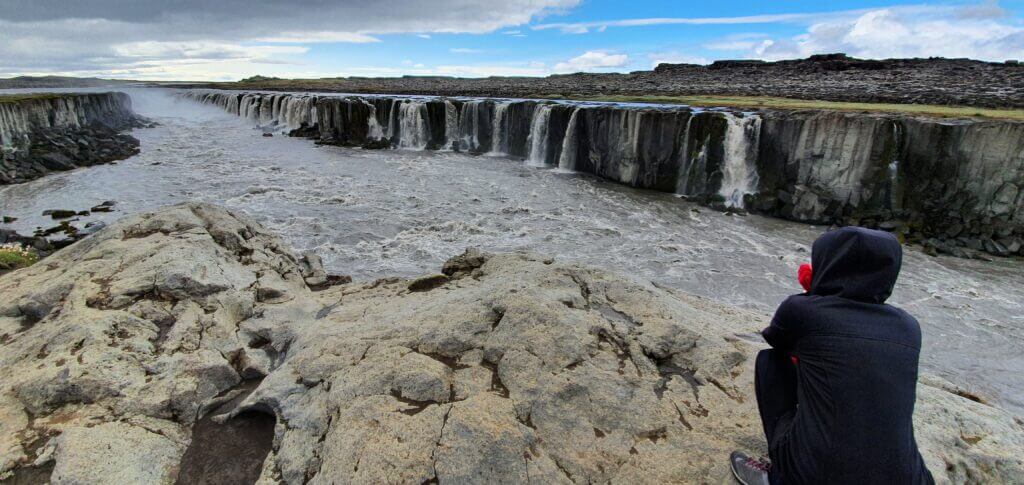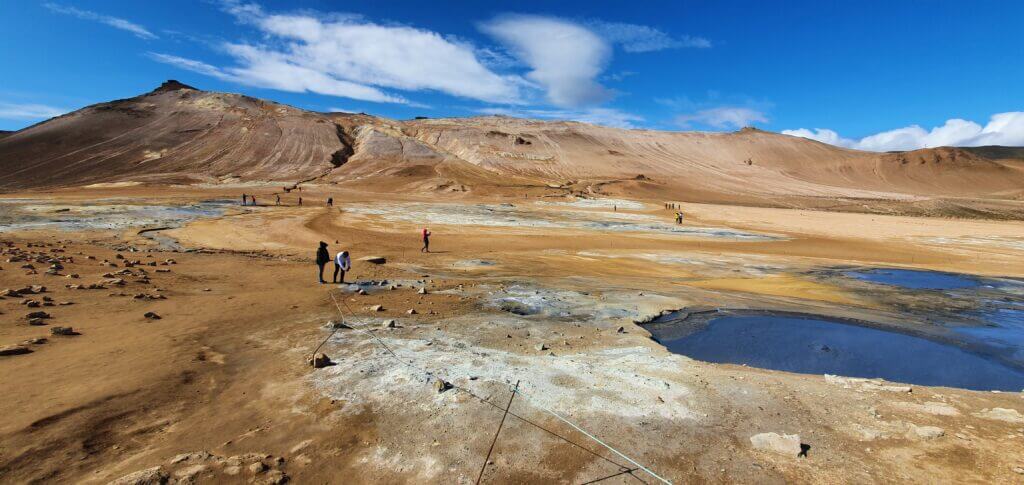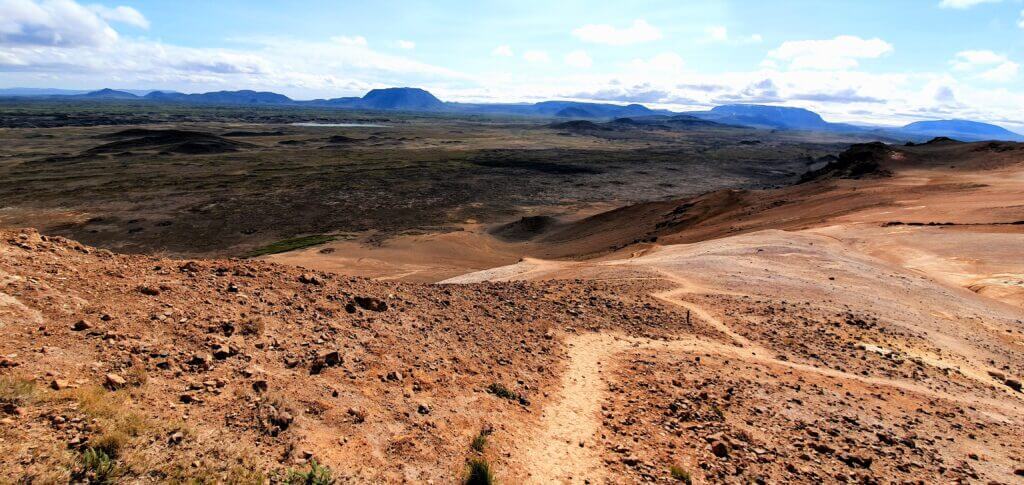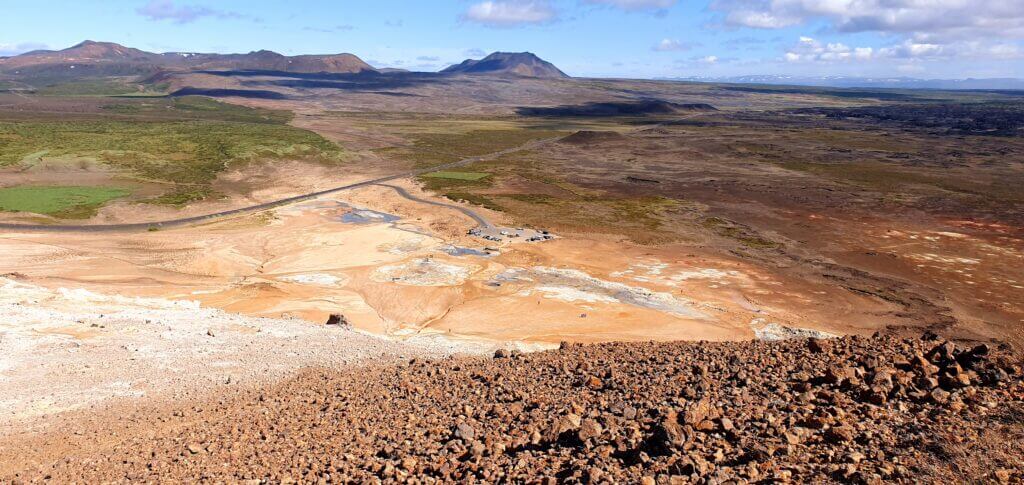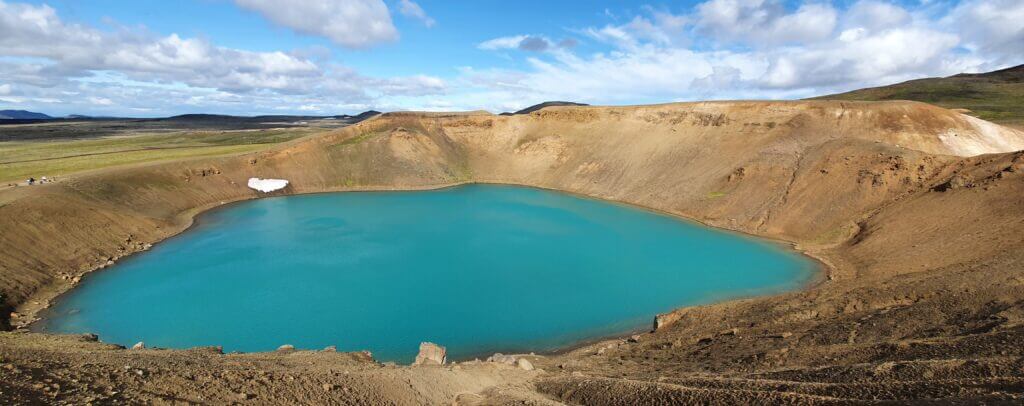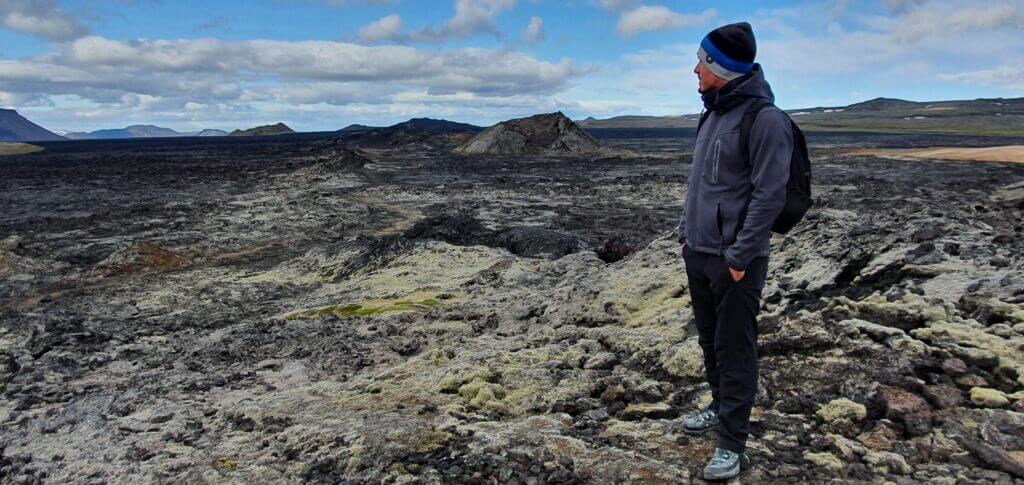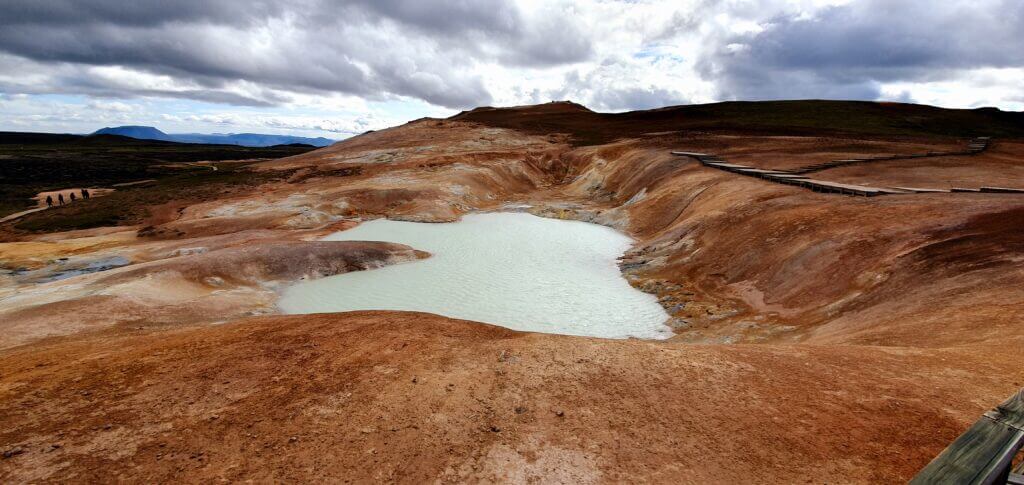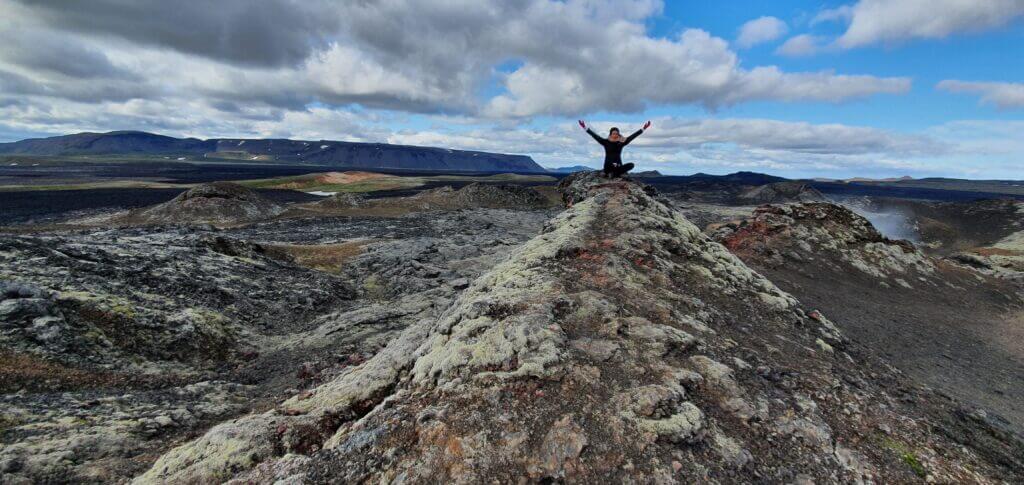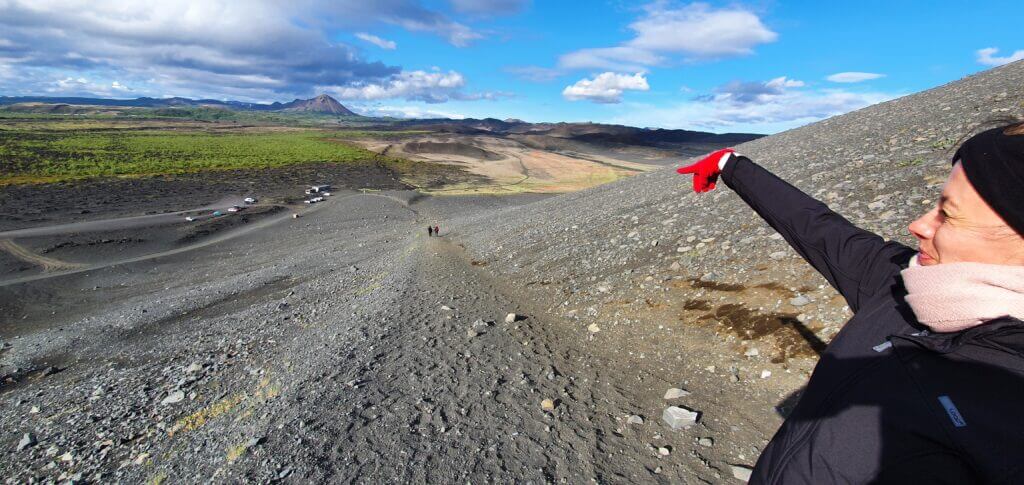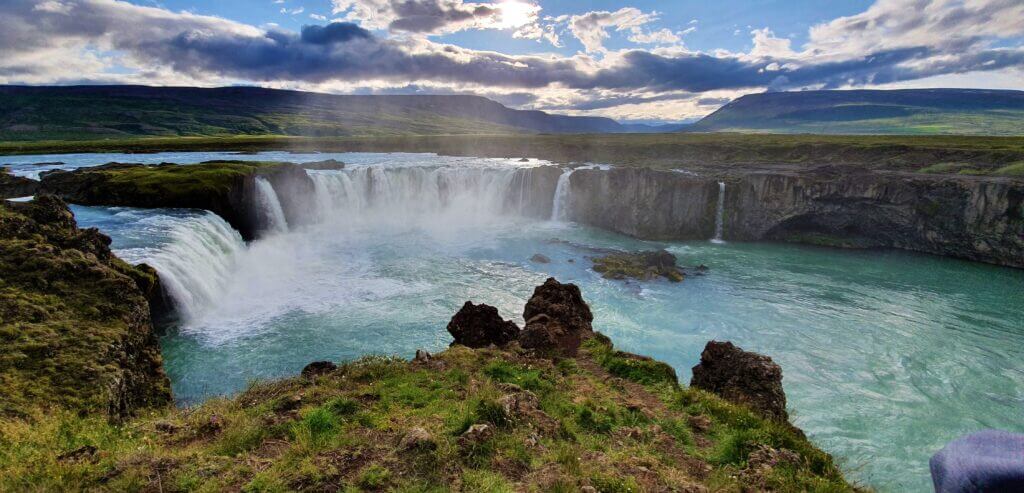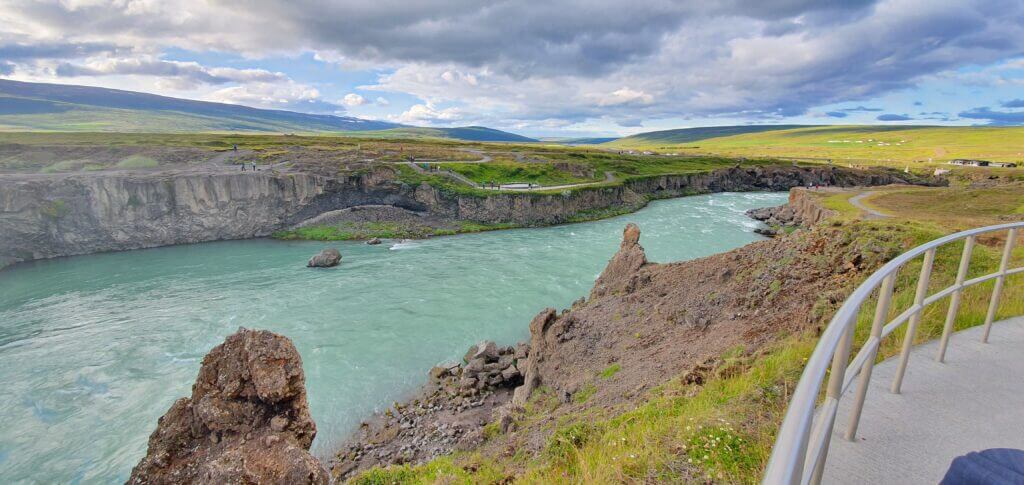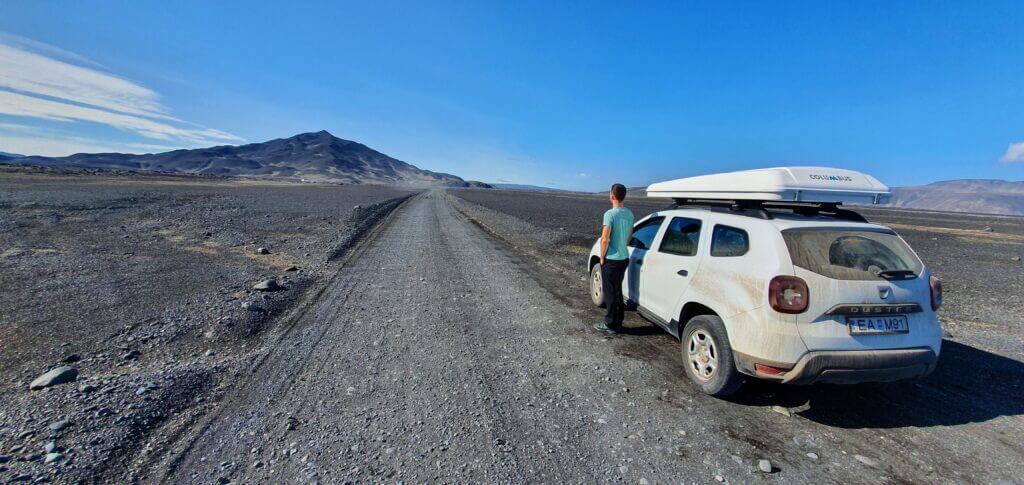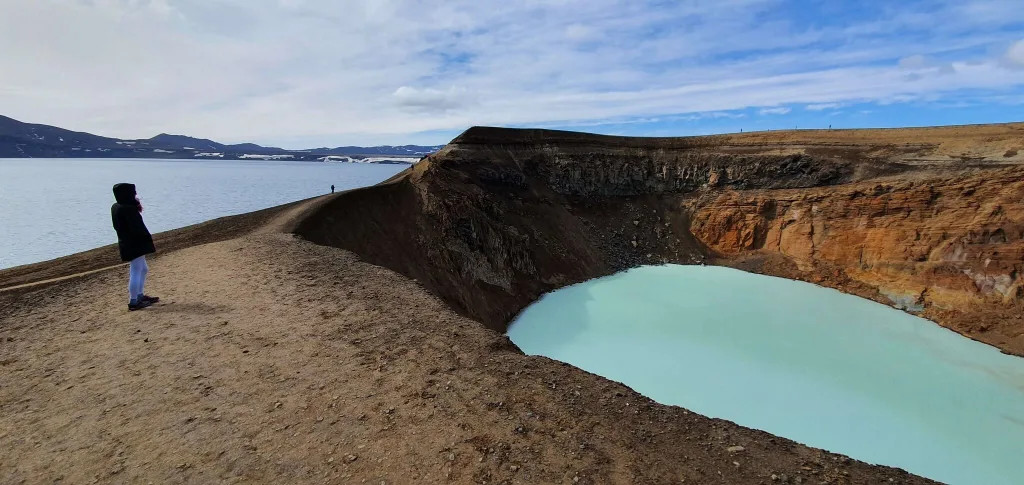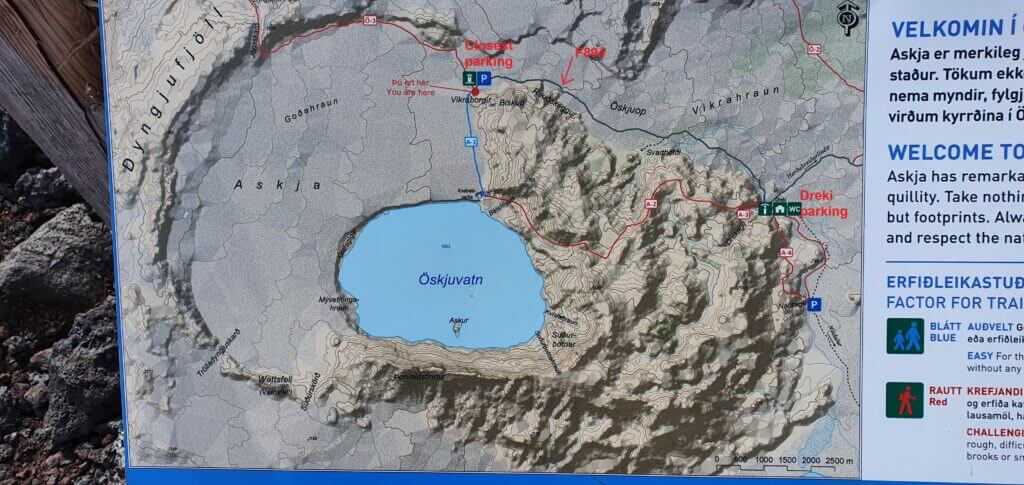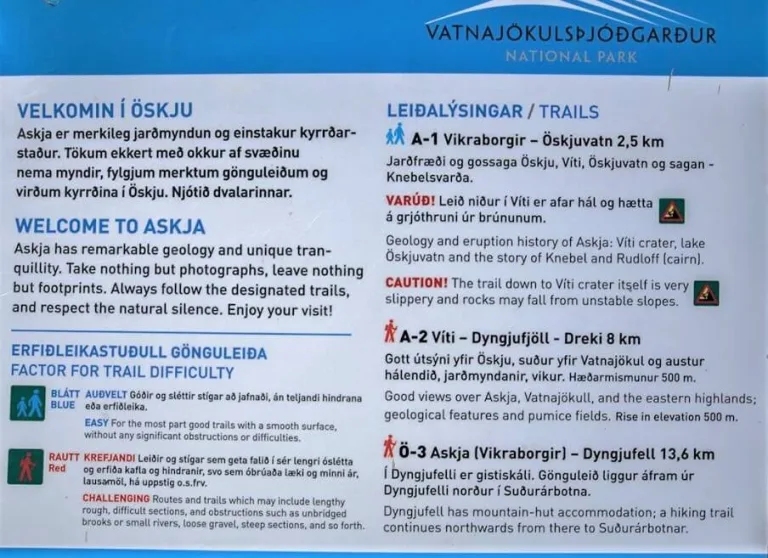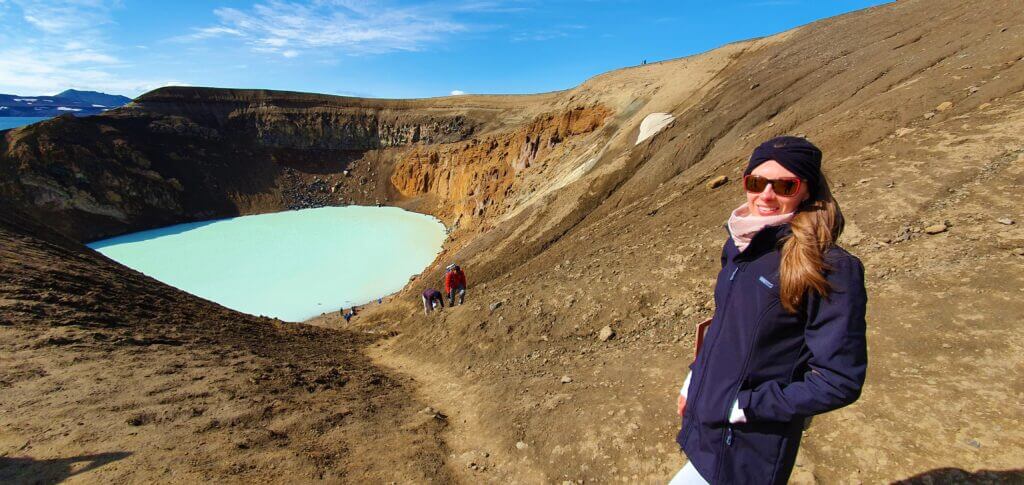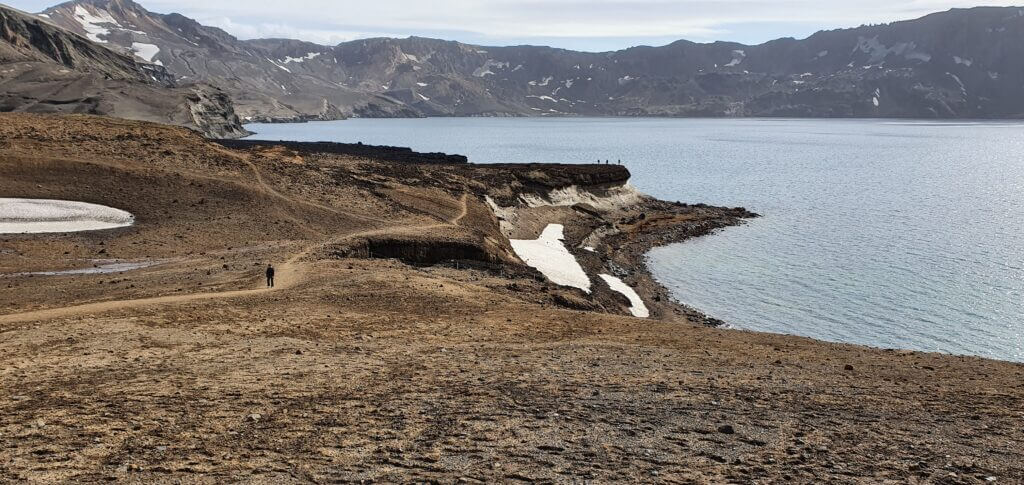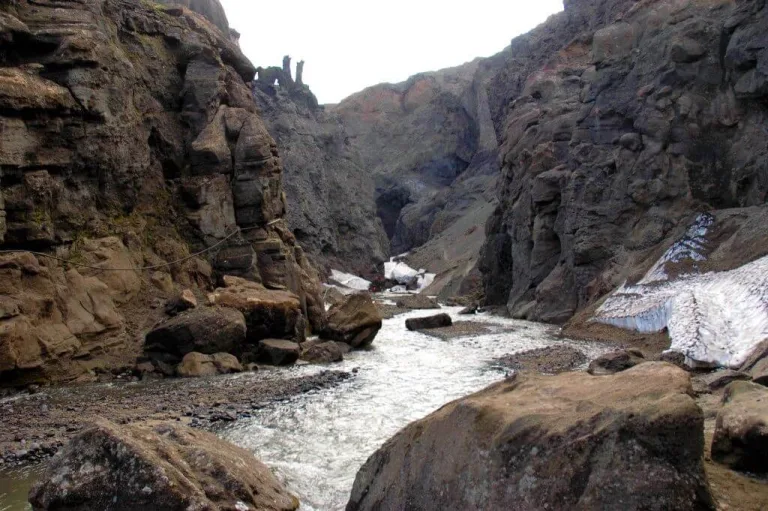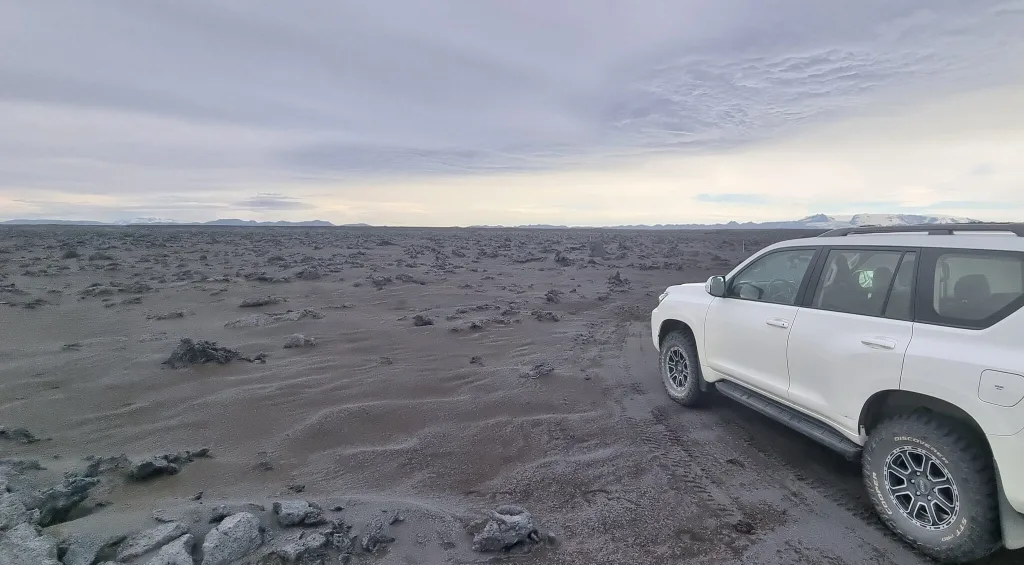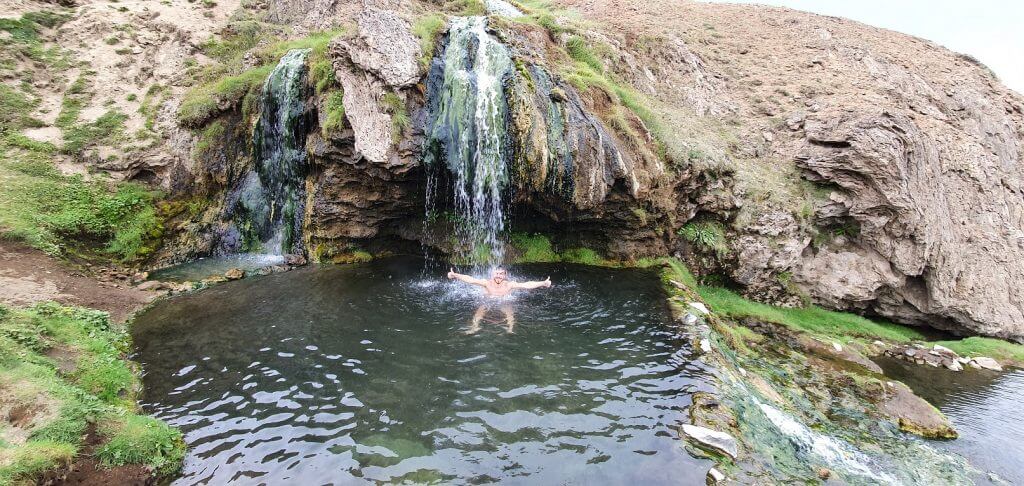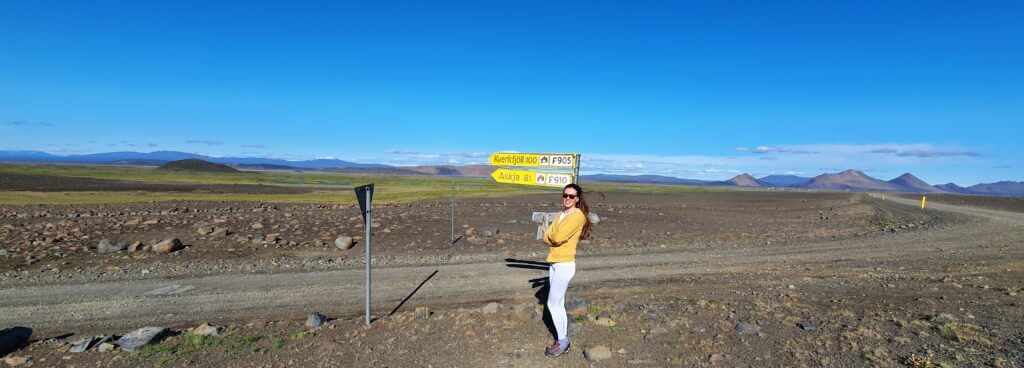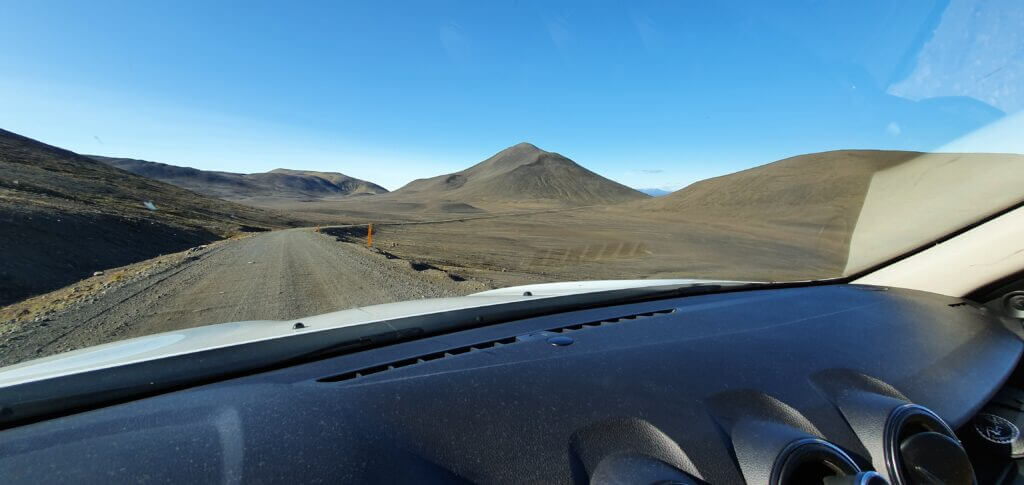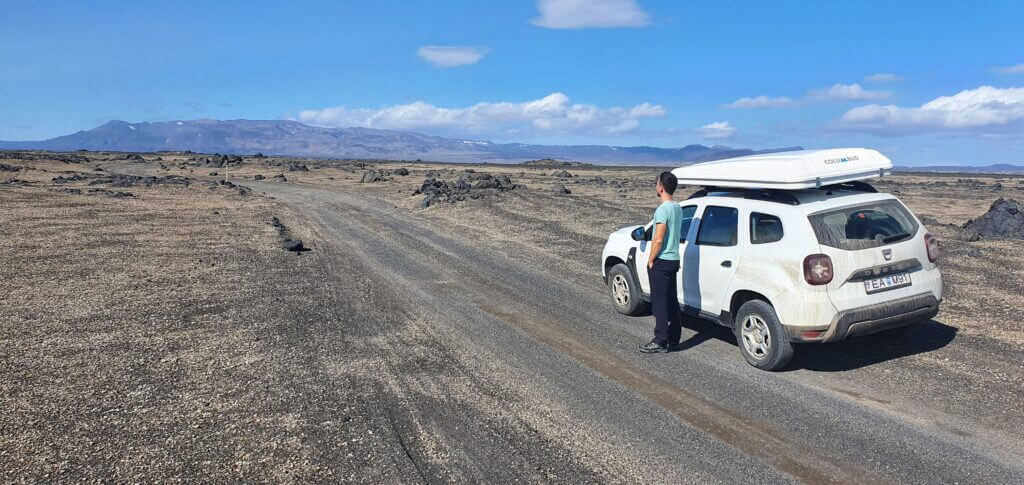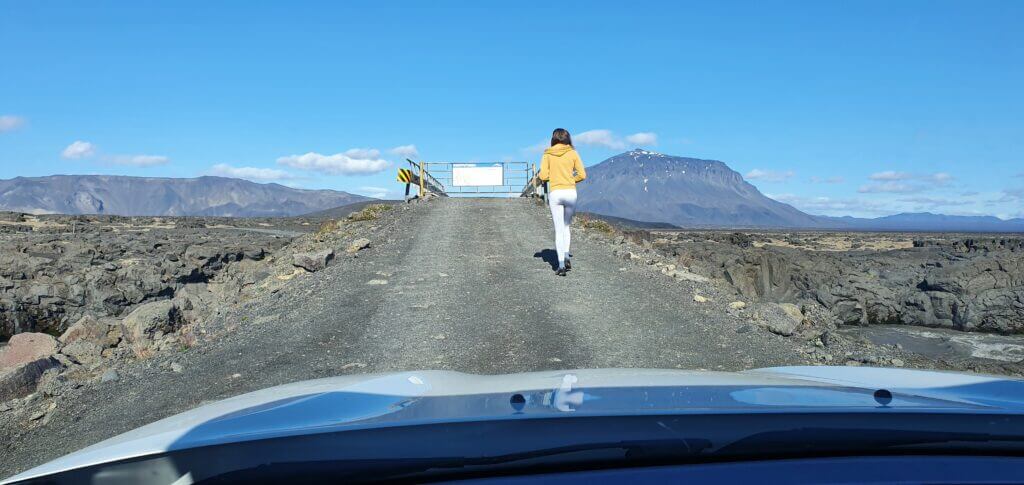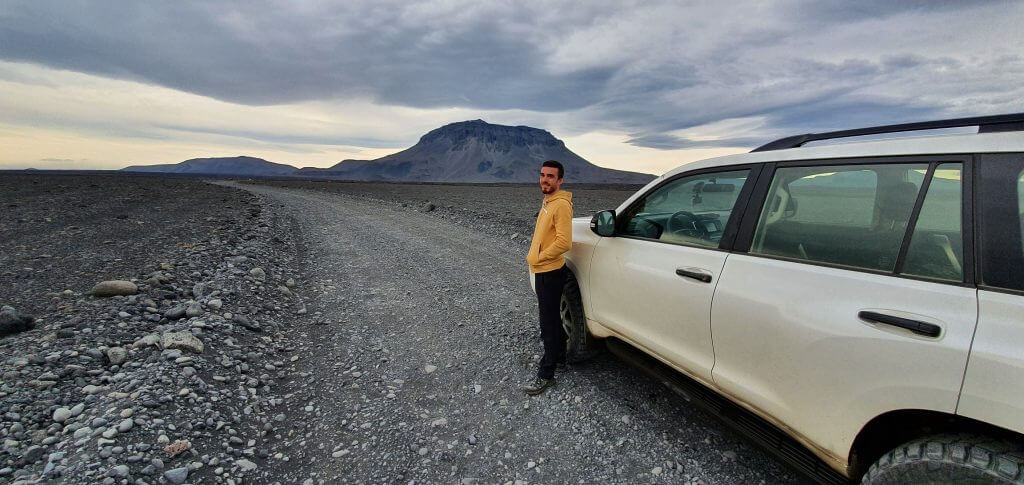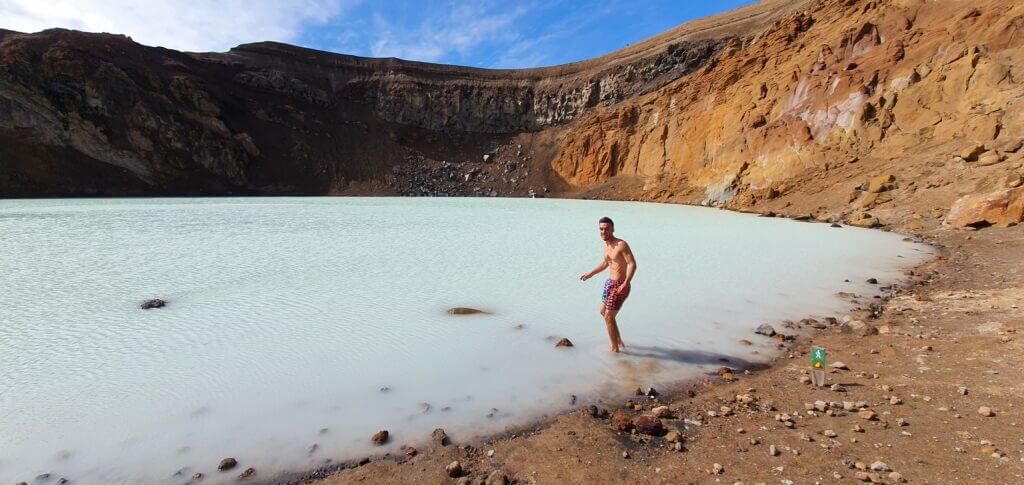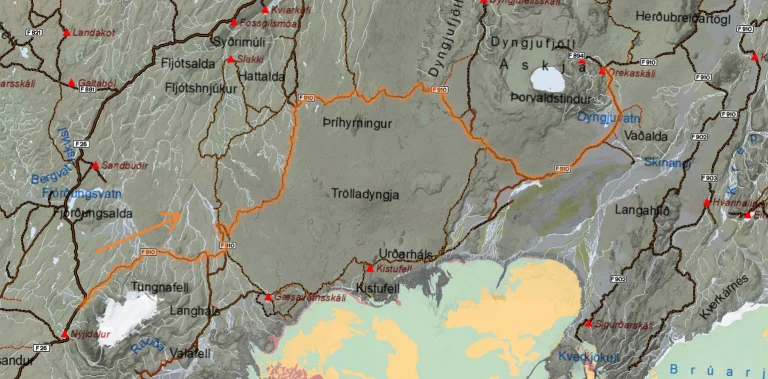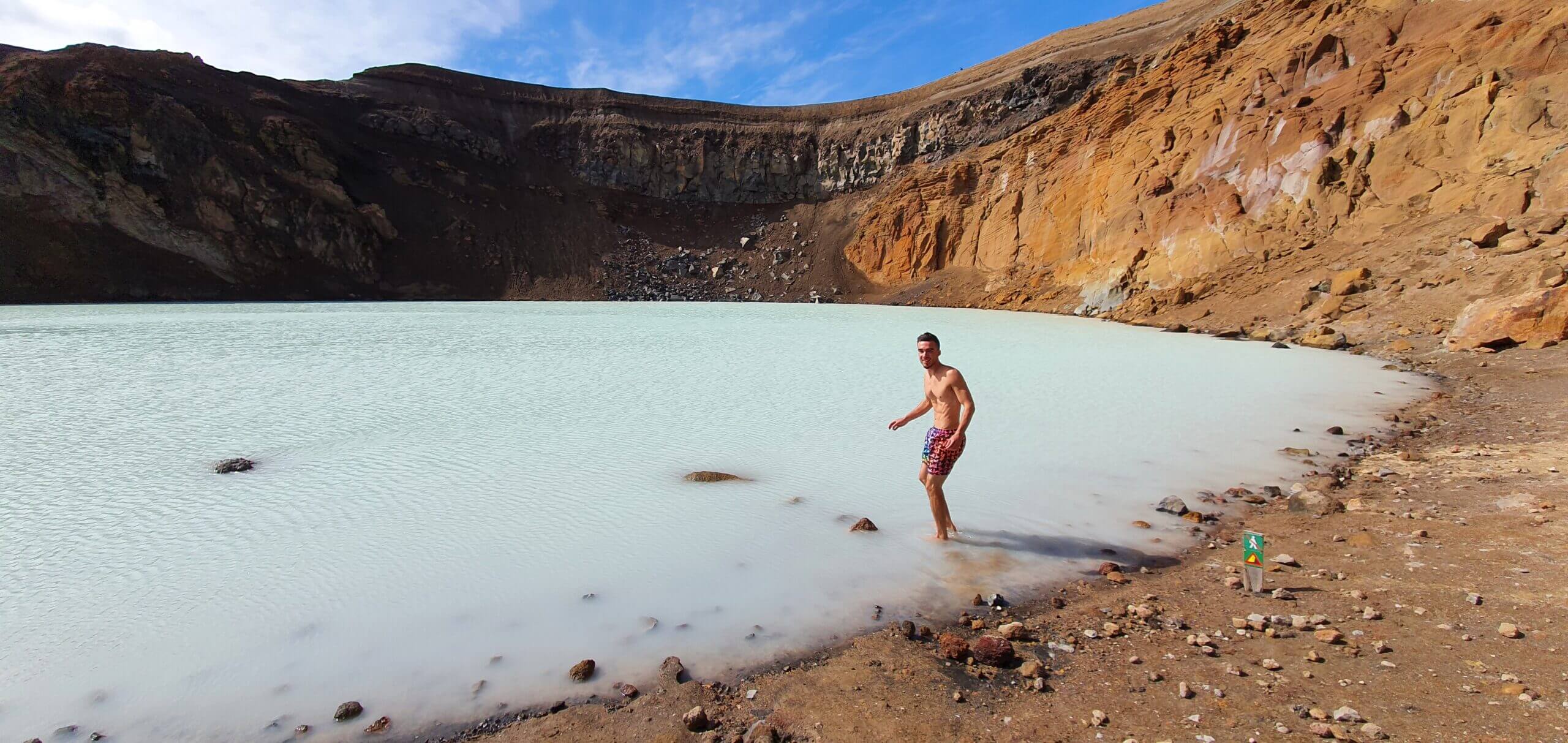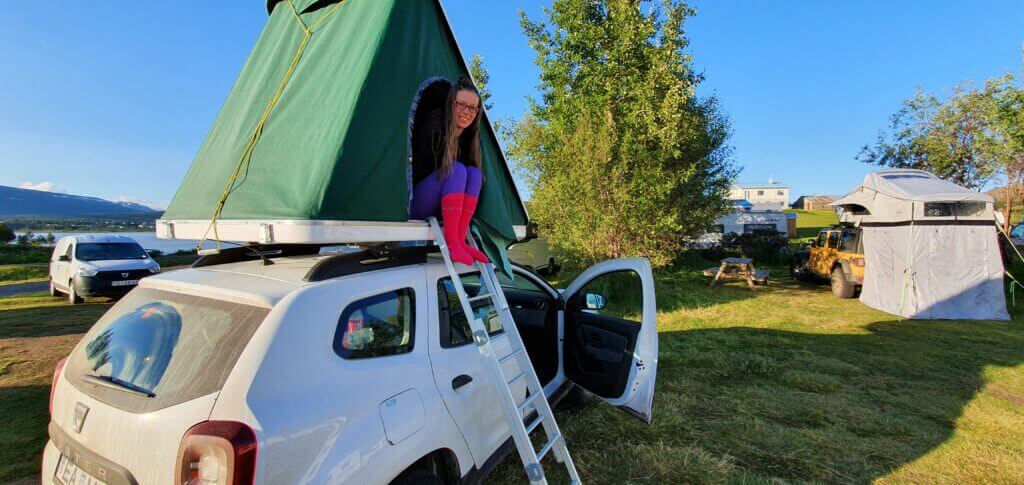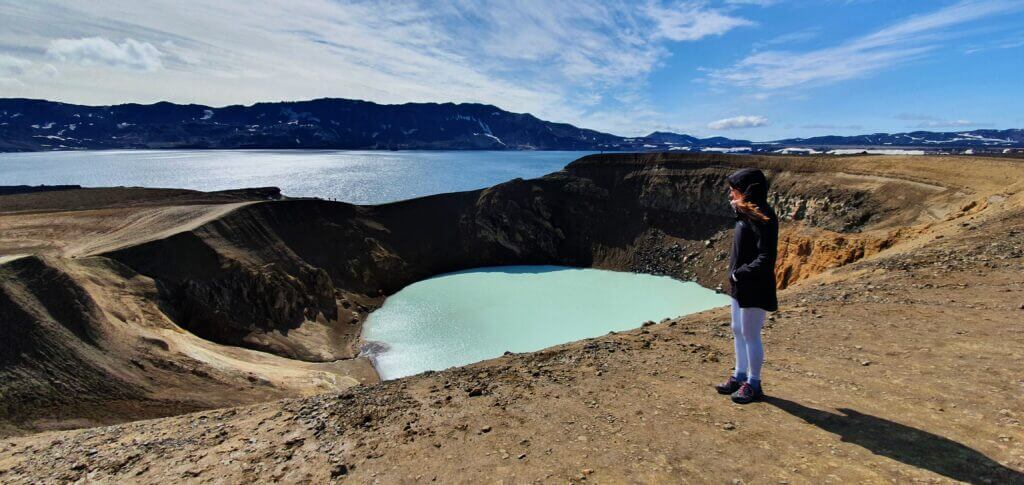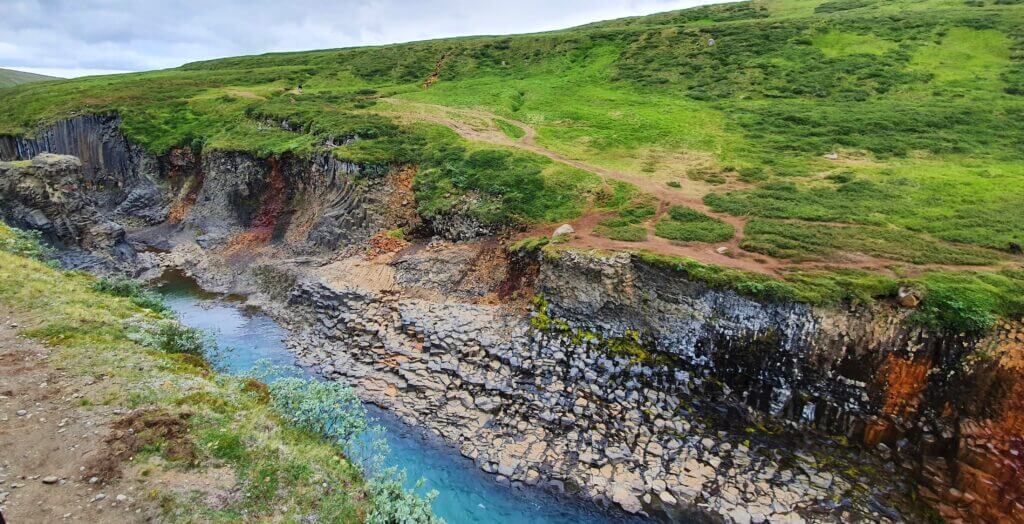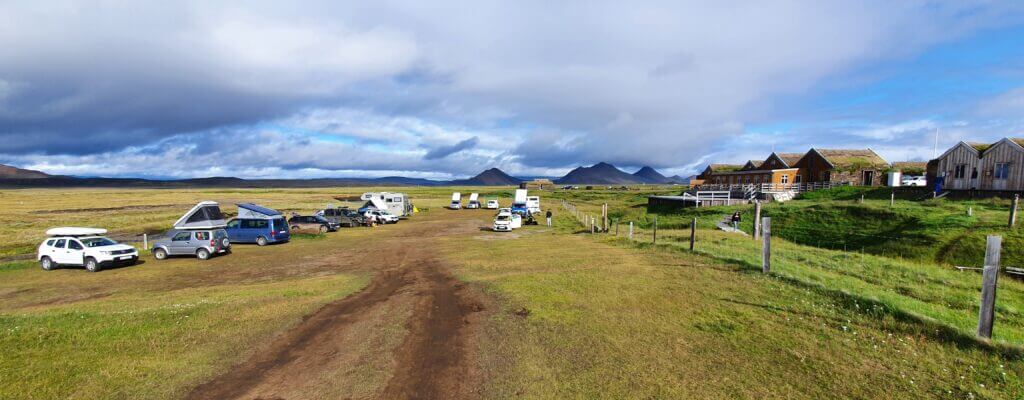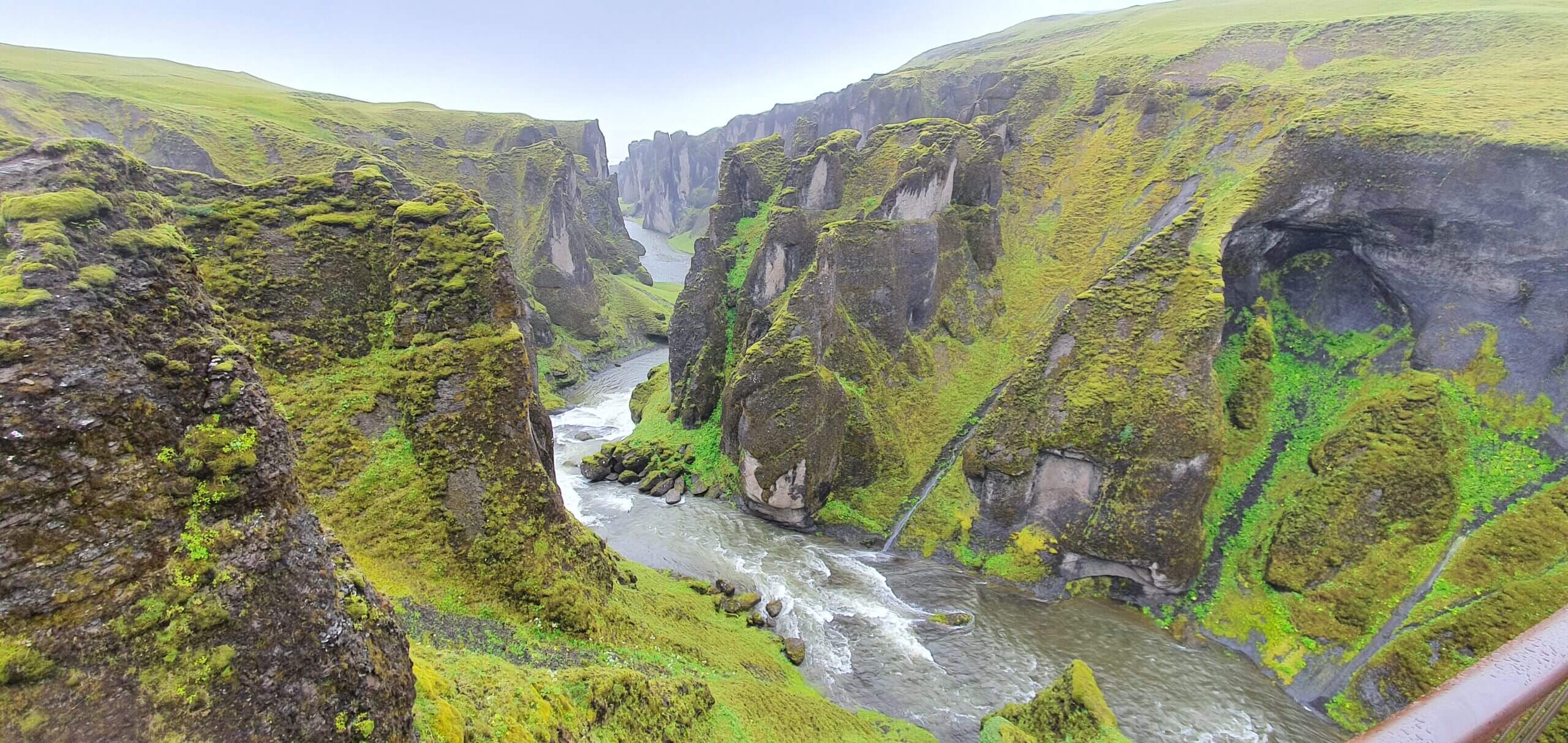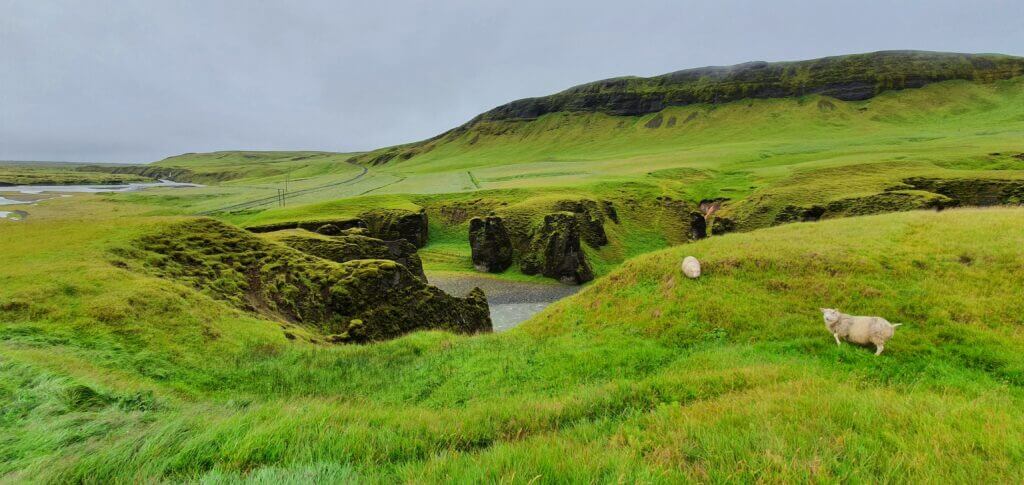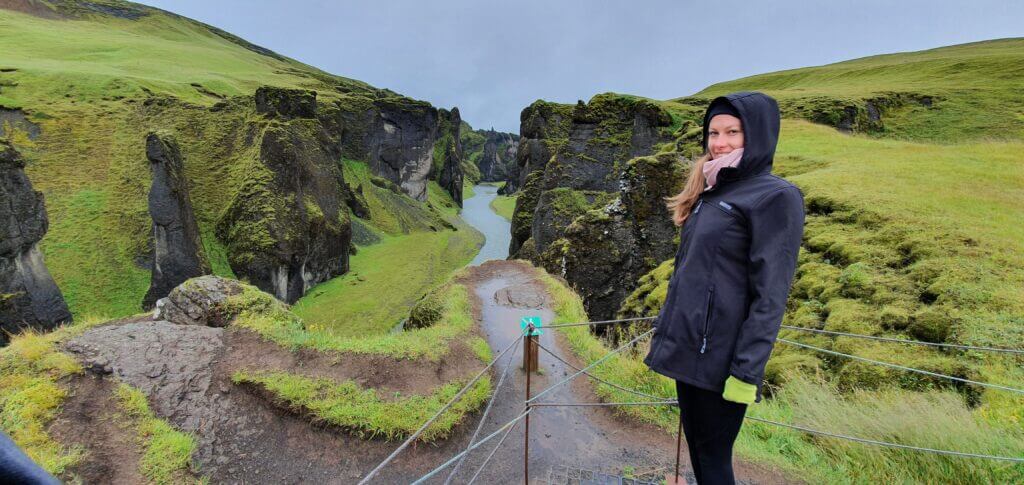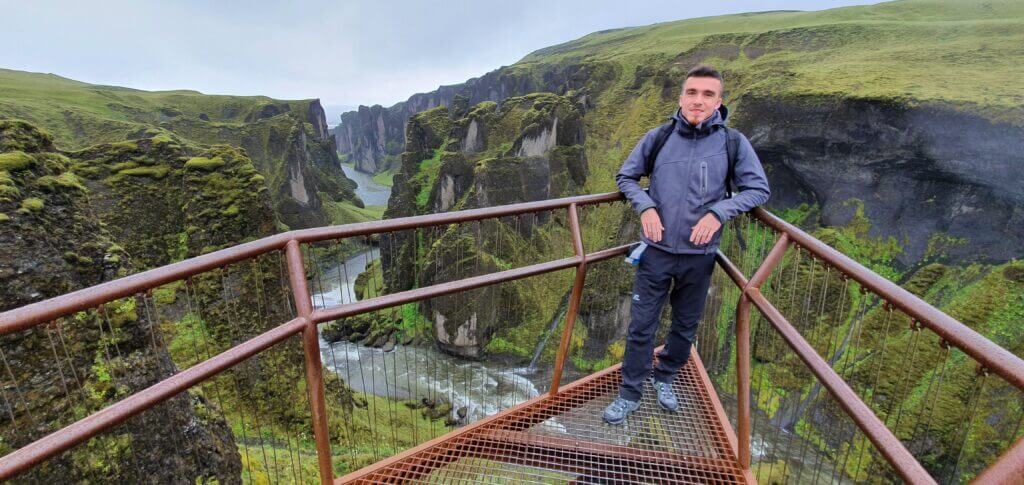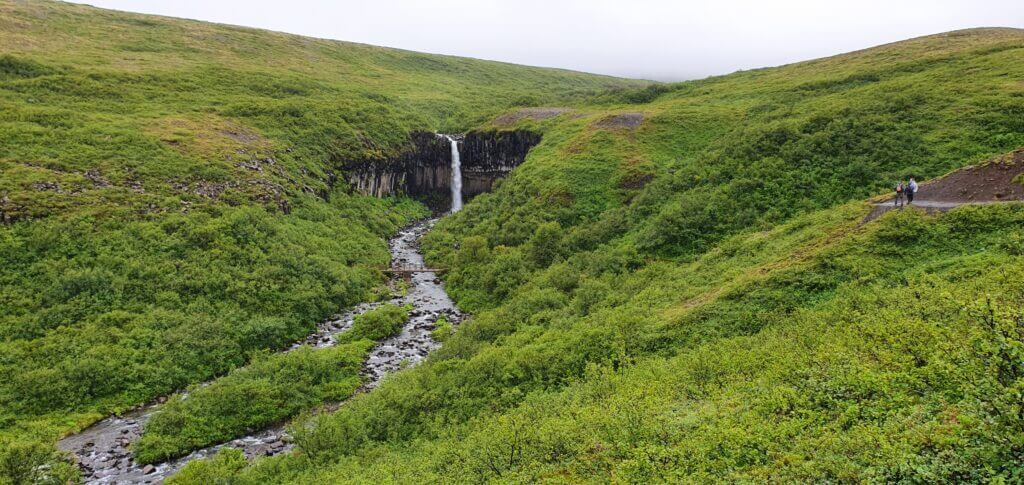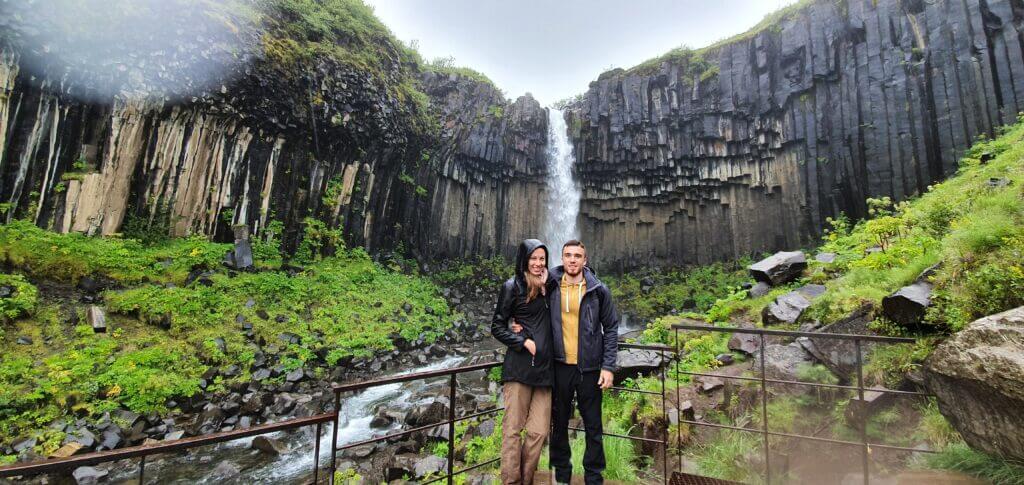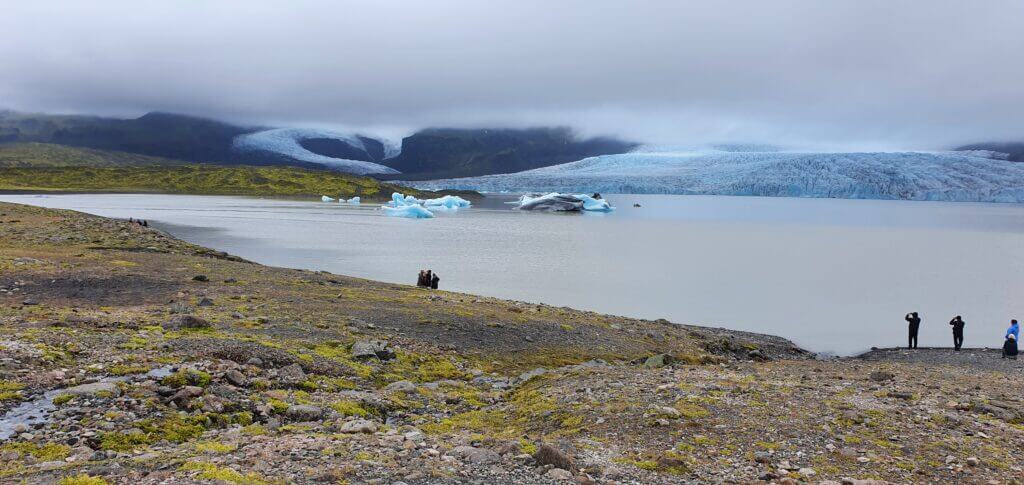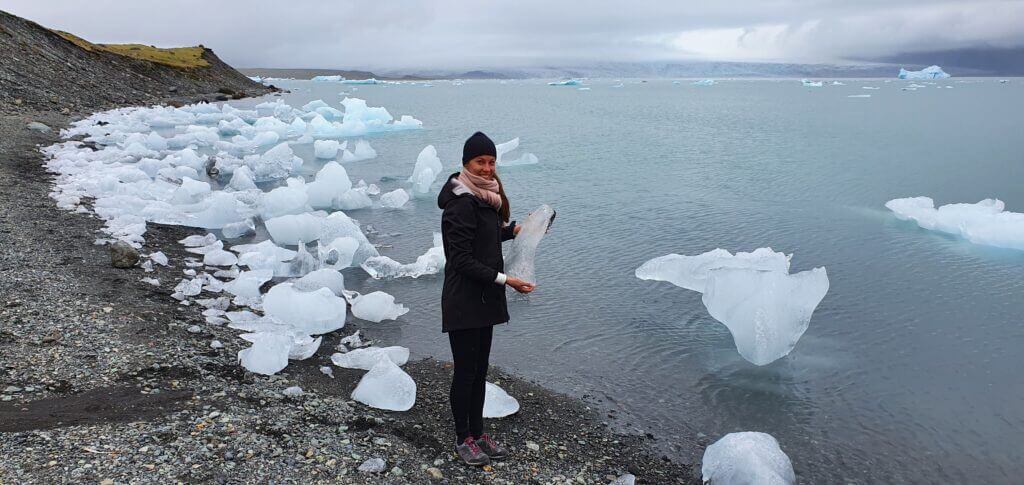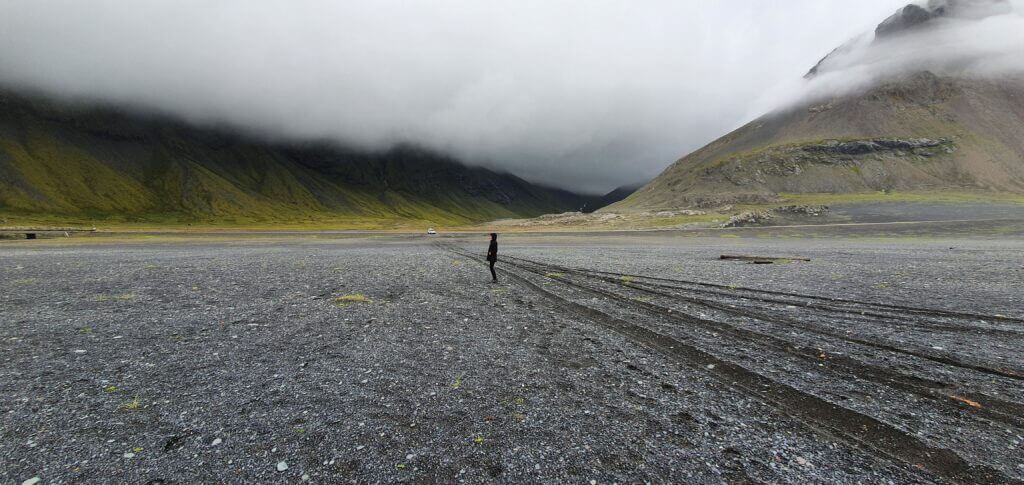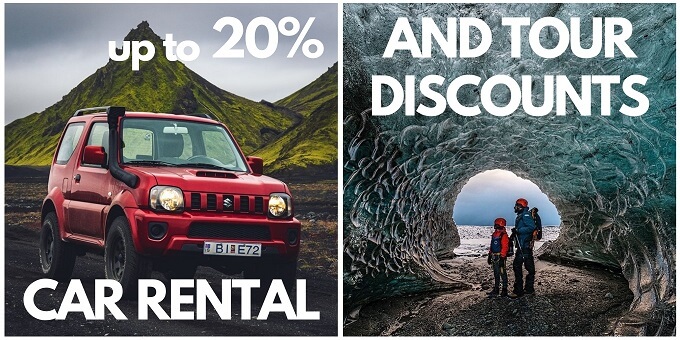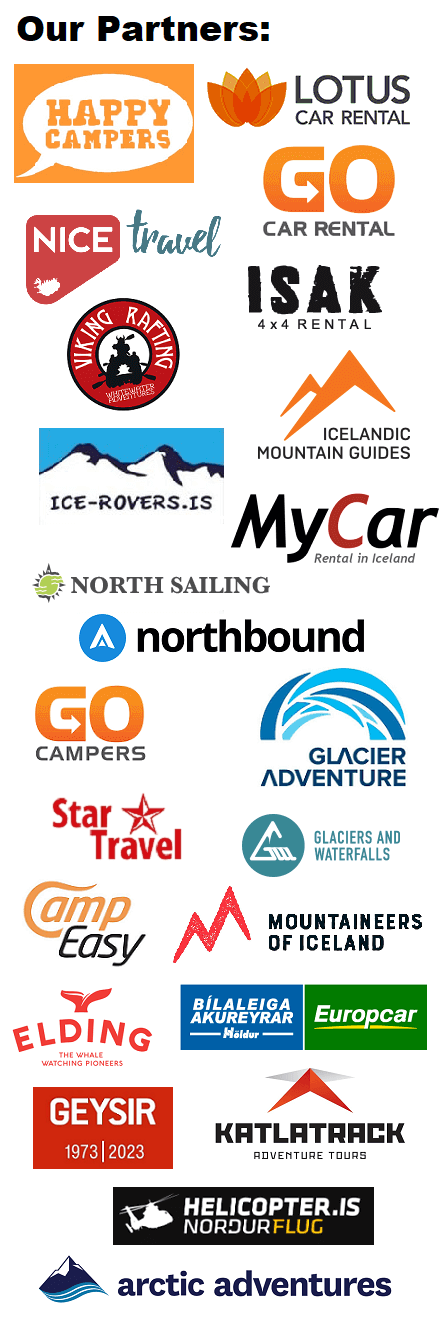According to the weather forecast, the last full day of our journey was supposed to be without rain only before 3 pm. Thus, we adjusted our plans accordingly. We woke up at 6 am and tried to see everything important before the rain comes. And we made it.
Contents
- Road 60 – Vestfjarðavegur – towards Dynjandi
- Dynjandi waterfall
- Road 63 – Bíldudalsvegur, and road 62 – Barðastrandarvegur, towards Látrabjarg
- Reykjafjarðarlaug Hot Pool
- Road 612 a.k.a. Örlygshafnarvegur to Látrabjarg
- Látrabjarg
- Plane wreck, Hnjótur museum, boat wreck
- Rauðisandur beach
- Road 62 – south – Barðastrandarvegur towards Flókalundur
- Hellulaug hot spring
- Road 60 – south – Vestfjarðarvegur towards Kinnarstaðir
- SjávarSmiðan
- Búðardalur camping Dalakot
- Day 13
- Videos
Road 60 – Vestfjarðavegur – towards Dynjandi
7:30-8:00
Worth visiting even with bad weather: yes, probably Interesting index: 1 – amazing (1-amazing, 2-great, 3-nice)
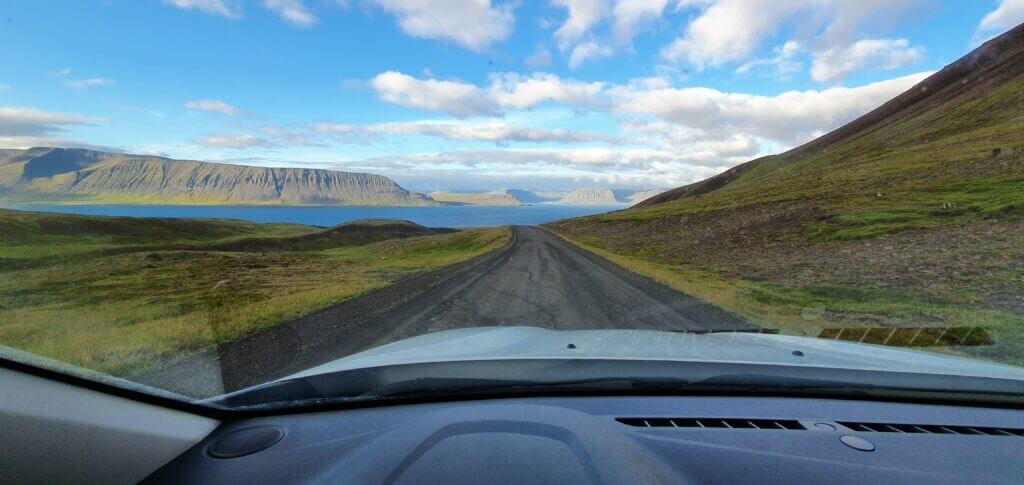
Road 60 (Vestfjarðavegur) between Þingeyri and Flókalundur
Road 60 is a beautiful fjord road. It firstly crosses the mountainous landscapes and then leads along the coastline. It’s a kind of semi-paved road with occasional potholes, so definitely not the best, but not an F-road as well. It’s doable by 2wd car, you’ll just have to drive carefully and more slowly than Google times suggest.

Road 60, or Vestfjarðavegur in Westfjords towards Dynjandi waterfall
Views along the road are amazing and unique, though. The road is definitely worth taking.
Dynjandi waterfall
8:00-8:30
Distance from car park: 10 minutes Time spent at: 30-45 minutes Worth visiting even with bad weather: yes Physical condition needed: little to medium Interesting index: 1 – amazing (1-amazing, 2-great, 3-nice)
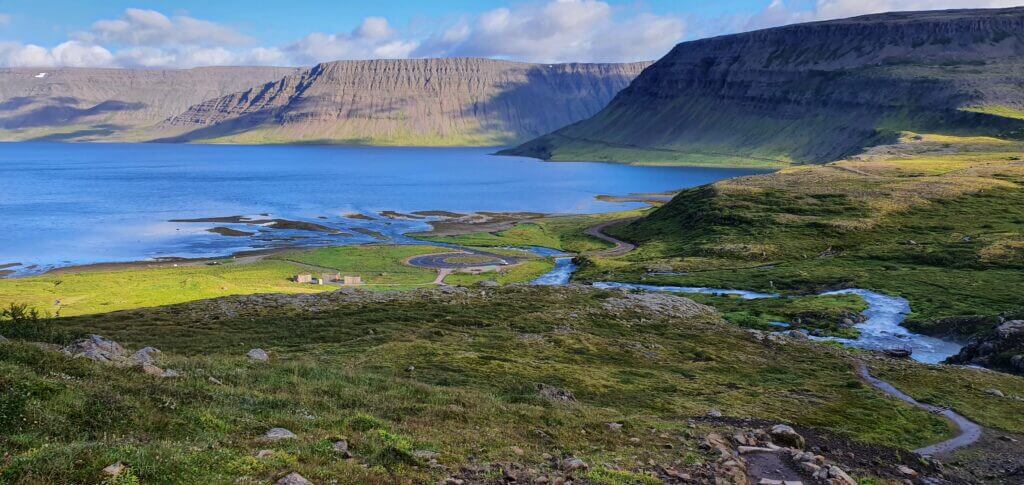
See that car in the distance? That was our car and this was a parking place
Probably the most beautiful waterfall in Westfjords (and one of the best in Iceland as well) – that’s Dynjandi waterfall. The huge car park and the entire infrastructure around the waterfall suggest that Dynjandi is apparently a very touristy place during normal times. Not during Covid-19 times, though. When we reached the parking lot at 8 am, we were the only car parking there. Just us and the beautiful Dynjandi.
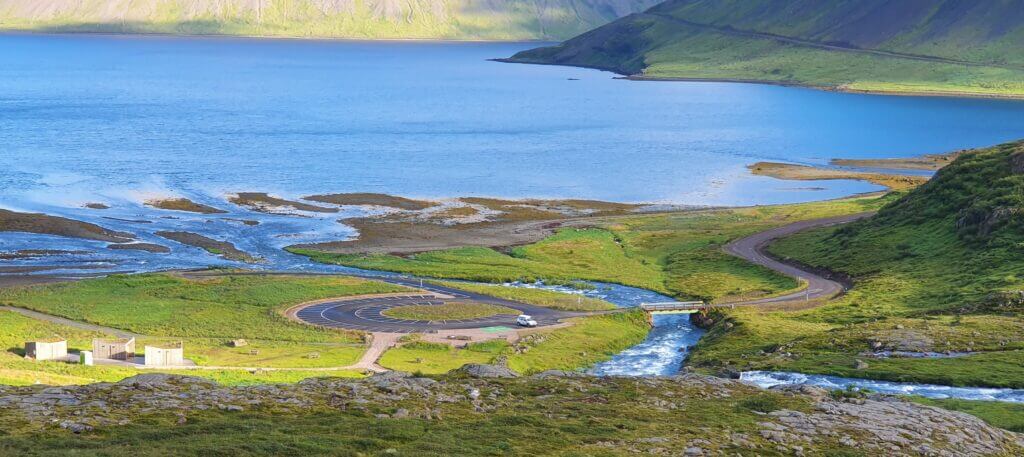
OK for those of you who don’t have a zoom. Dynjandi parking
I had read before, that the hiking trail towards Dynjandi takes about 45 minutes to complete. That’s not true. It takes only some 10-15 minutes of light hiking to arrive at the base of the waterfall. Maybe there’s a trail continuing even further to the upper part of the waterfall (which takes 45 minutes to complete), I don’t remember any though.
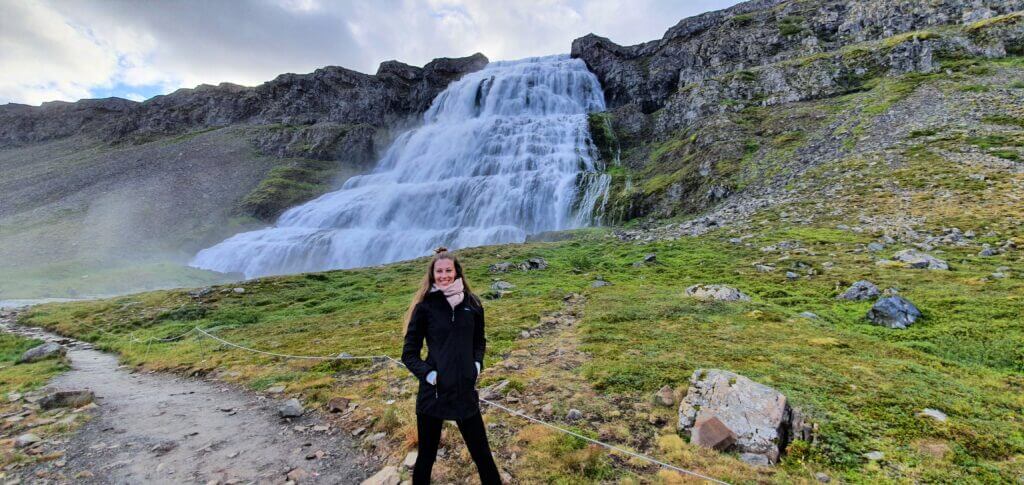
Dynjandi waterfall trail
There are several smaller waterfalls below Dynjandi and you will meet them along your trail towards Dynjandi. The actual Dynjandi definitely belongs to the top Icelandic waterfalls we’ve seen. Its unique shape makes it more than just memorable.
Road 63 – Bíldudalsvegur, and road 62 – Barðastrandarvegur, towards Látrabjarg
8:30-9:30
Worth visiting even with bad weather: yes, probably Interesting index: 2 – great (1-amazing, 2-great, 3-nice)

Crossroads of the roads 60 and 63 or Bíldudalsvegur and Vestfjarðavegur
Our biggest (and most distant) stop of the day was a visit of Látrabjarg cliffs. Although Google had suggested the southern road 60 to be the fastest, we chose the northern way – via 63 and 62. We didn’t want to go twice via the same roads (as would be the case with road 60) and we also wanted to take a look at Reykjafjarðarlaug hot pool.
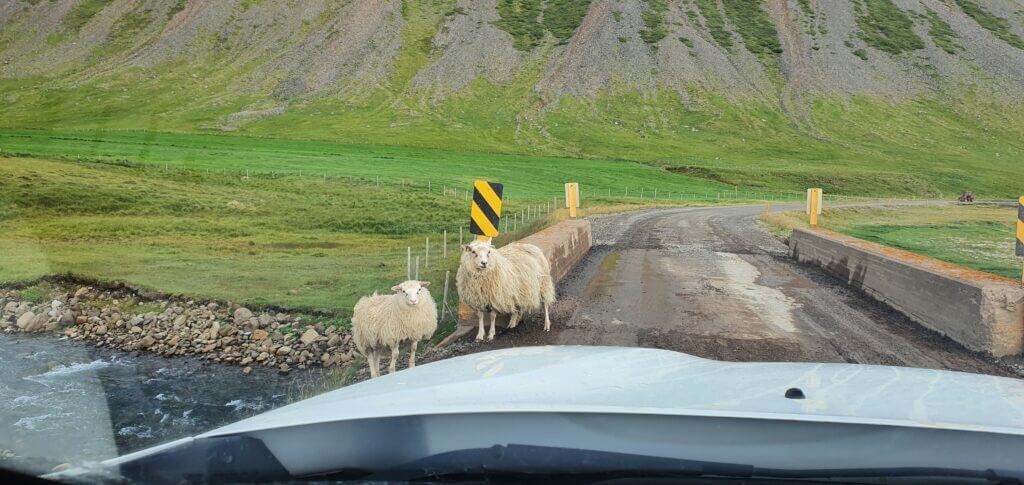
Road 63 Bíldudalsvegur
We didn’t take many pictures of these roads. As far as I remember, they were (similar to the road 60) combination of normal paved roads and semi-paved gravel roads with some potholes. And again – a combination of mountain roads and coastal fjord roads. That means – absolutely OK with any 4wd car and also fine with 2wd, you will just need to drive carefully and more slowly compared to Google Maps’ estimates.
Reykjafjarðarlaug Hot Pool
9:30

Reykjafjarðarlaug hot pool
We wanted to reach Latrabjarg as soon as possible because the weather was still nice and we wanted to make it there while it still was. That’s why we made just a quick stop at Reykjafjardarlaug hot pot. There are actually 2 places for bathing in here.
First one is the man-made artificial pool with regulated water temperature. The second one is the actual source of the hot water itself – a wild hot spring with varying temperature (usually much hotter). This hot spring lies nearby.
Road 612 a.k.a. Örlygshafnarvegur to Látrabjarg
10:30-11:30
Worth visiting even with bad weather: no, probably Interesting index: 1 – amazing (1-amazing, 2-great, 3-nice)
We had already realized that the more difficult the name of the road in Iceland is to pronounce, the shittier the actual road will be. Orlygshafnarvegur was in line with this newly found rule of ours. Road 612 starts neatly but gets rougher and rougher with each additional kilometre.
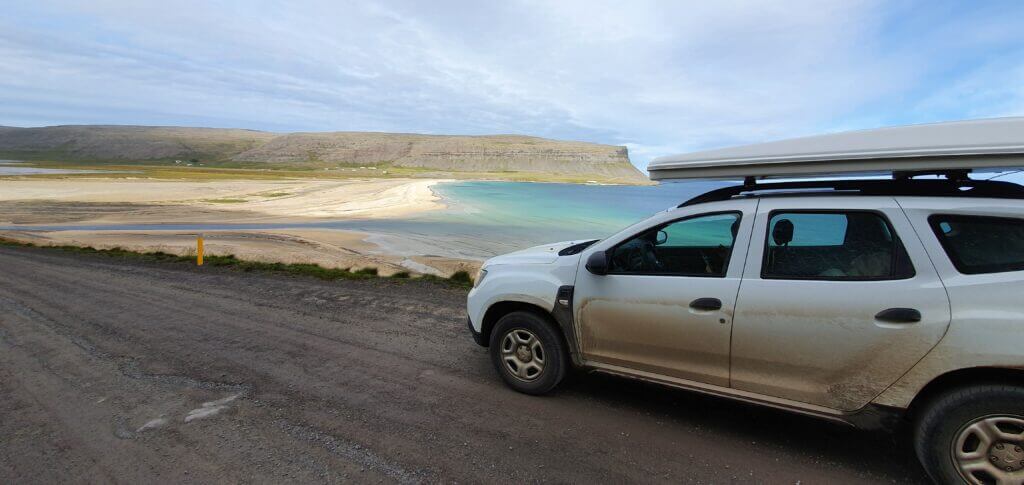
Breiðavík beach
The last part of Örlygshafnarvegur is a rough, narrow gravel road with many potholes, leading across the mountainous area and sometimes even next to the coastal edge simultaneously. It’s definitely doable by any 4wd car (not sure how it looks in rough weather, though). We also met several 2wd cars, but they were struggling at least. Sure, in good weather you can make the last part even with 2wd, it will just take you much longer than in 4wd and you will be probably blocking many 4wds waiting behind you.
Nevertheless, the “rough part” of 612 is not very long, so if you are patient enough, feel free to take it even in 2wd. Views along the road are breath-taking. You will pass a shipwreck, a plane wreck, a car scrap yard, some small settlements and, most importantly, the picturesque Breiðavík beach. Is Orlygshafnarvegur dangerous? No, just don’t look down too much when driving near the edge of the mountain 🙂
Látrabjarg
11:30-12:30
Distance from car park: 2-15 minutes Time spent at: 20-60 minutes Worth visiting even with bad weather: no, probably Physical condition needed: little Interesting index: 1 – amazing (1-amazing, 2-great, 3-nice)
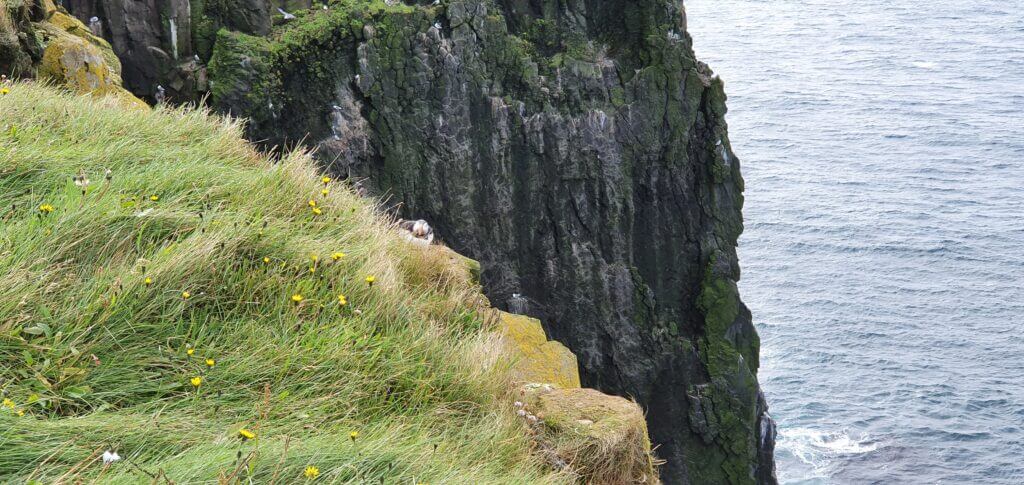
First puffins spotted during our journey! At Latrabjarg
I had not studied about Latrabjarg much beforehand, just saw a beautiful picture of a cliff and decided to go there based on that one picture. Once we arrived there, we, however, realized why so many people take their time to reach the place.

Látrabjarg cliffs
Not only is Latrabjarg the westernmost place in entire Europe, it is also the place with one of the most unique floras and faunas. Secondly, the actual Latrabjarg cliff is more than just magnificent. It’s huge and admirable. And as a bonus, guess who is here? Puffins! During our entire 12-day trip Latrabjarg was the first and the last place where we saw puffins. Later on, I read that Latrabjarg is a place where “it’s guaranteed to see puffins”. It seems to be so!
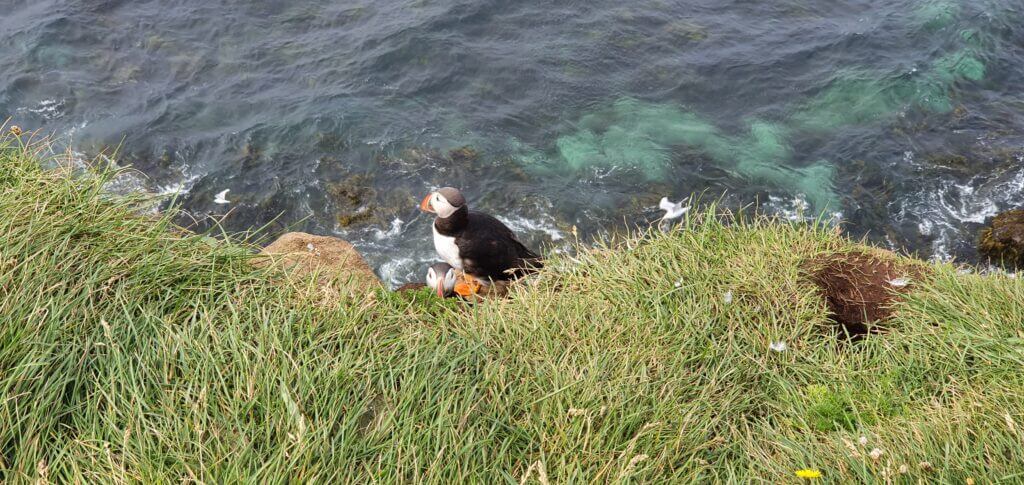
Last puffins spotted during our journey. At Latrabjarg
We spent some time observing strange puffin flights and their landing, often, right next to us. Truly once in a lifetime experience. You may hike along the edge of the cliff as long as you want. We did so for some 15 minutes and then turned back. Although Latrabjarg was the place where we saw the biggest number of cars parked in Westfjords, it still didn’t seem to be crowded because of the size of the entire area.
To conclude – Latrabjarg is definitely worth making a detour.
Plane wreck, Hnjótur museum, boat wreck
13:00-14:00
Distance from car park: 0 minutes Time spent at: 30-90 minutes Worth visiting even with bad weather: yes Physical condition needed: little Interesting index: 3 – nice (1-amazing, 2-great, 3-nice)
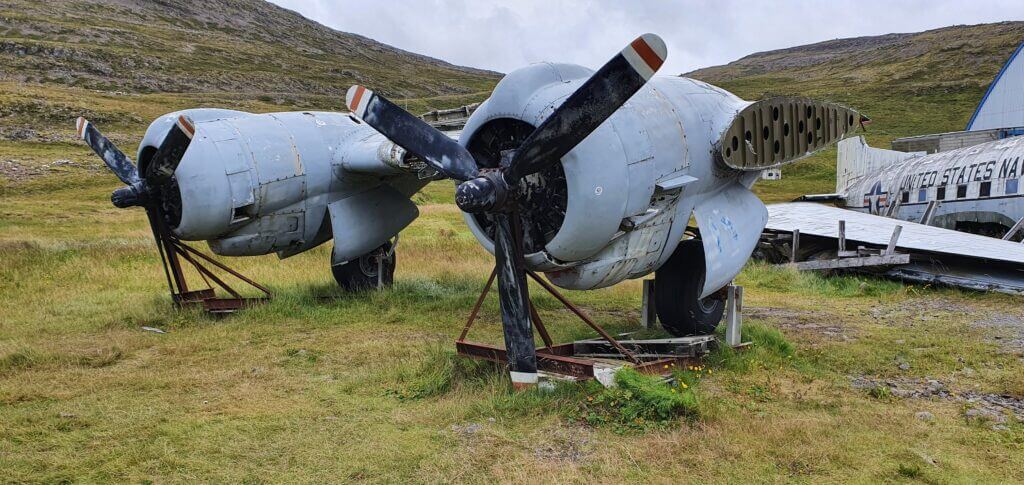
Plane wreck in front of the Hnjótur museum
Hnjótur museum
As I had already written, we had passed several interesting places along the Örlygshafnarvegur, which we had skipped before. On our return journey, we came back to them.
I’m not really into museums but my girlfriend is. So that she’s happy, we made at least one museum stop – for Hnjotur museum. It’s basically a museum displaying the historical life of people in this area. My girlfriend found it very interesting (I stayed chilling with coffee outside). After the visit, she told me stories about how Icelanders used to hunt puffin eggs by climbing down the cliffs or how they had rescued castaways from ship accidents many years ago. So, if you’re into this kind of stuff, feel free to go for it.
Plane wreck
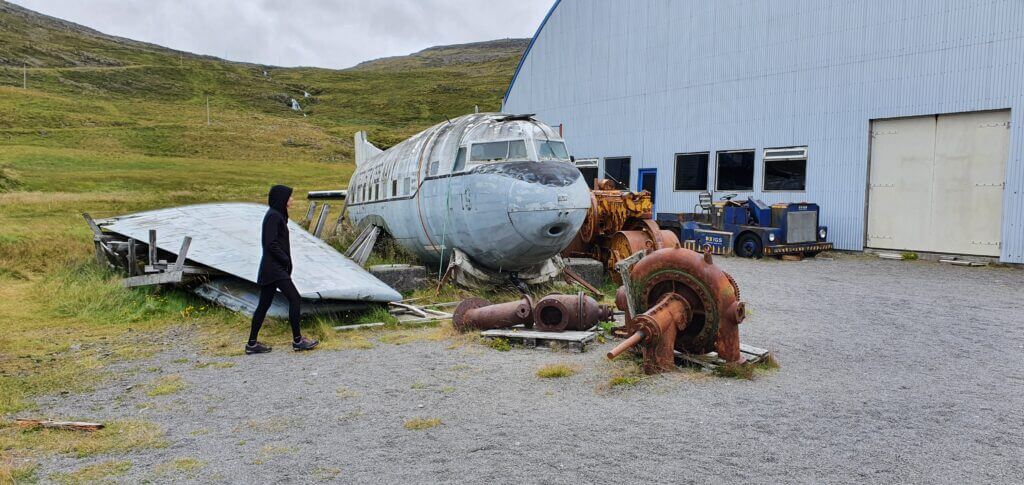
Plane wreck in front of the Hnjótur museum
In front of the museum, there’s a nice plane wreck. I guess not much different from the one near Reynisfjara beach (Sólheimasandurplane wreck). Just this one is less touristy.
Shipwreck Garðar BA 64

Garðar BA 64 shipwreck next to the road 612 Örlygshafnarvegur
A few minutes of the drive back via 612, there’s also a huge shipwreck. Second interesting boat wreck in Westfjords after the one in Djupavik. It’s a short stop along the road, so why not take it?
Rauðisandur beach
14:40-15:00
Distance from car park: 5 minutes Time spent at: 10-30 minutes Worth visiting even with bad weather: no, probably Physical condition needed: little Interesting index: 3 – nice (1-amazing, 2-great, 3-nice)
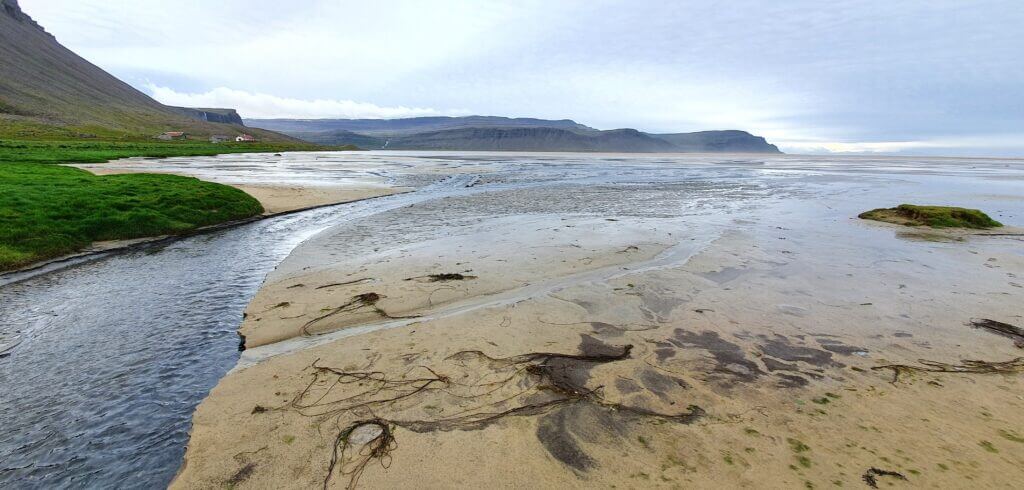
Rauðisandur beach
Just a 15-minute detour south from road 612 leads a hillside Rauðasandsvegur, or road 614, towards the biggest Icelandic beach – Rauðisandur beach. It’s a mountainous zig-zag drive on the pothole-full gravel road. It’s definitely a challenge in 2wd car, but without any problems in 4wd car (at least in good weather).
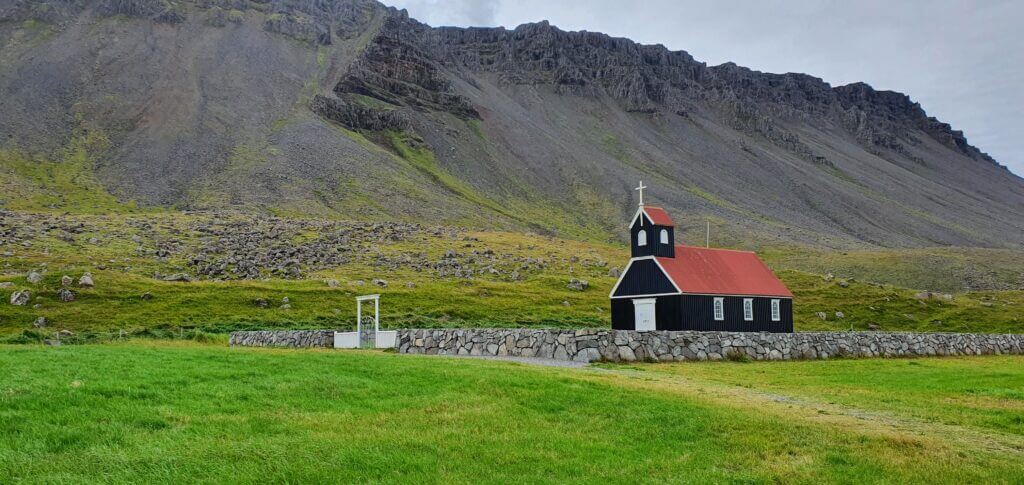
Saurbæjarkirkja next to Rauðisandur beach
We had heard a lot about Rauðisandur beach, with several people flagging it to be one of the most beautiful beaches they’ve ever seen. Well, if you haven’t seen many beaches in your life so far, then yes, Raudisandur beach is very nice. For us – beach lovers – we were not that overwhelmed. Yes, the beach is nice, yes, the beach is big, but other than that there’s nothing really special about Raudisandur beach. Personally, I liked the smaller Breidavik beach more. Maybe it’s nicer with sunny weather? We had a cloudy one.
Where to leave your car?
There’s a small car park in front of the picturesque Saurbæjarkirkja, or the little black church. Alternatively, you may continue further down the road in the direction of the church and leave your car there. The further you go, the less touristy it will probably be.
Road 62 – south – Barðastrandarvegur towards Flókalundur
15:50-16:30
Worth visiting even with bad weather: no, probably Interesting index: 1 – amazing (1-amazing, 2-great, 3-nice)
The southern part of Bardastrandarvegur, a.k.a. 62, is most of the time a good quality paved road. It firstly leads via hillside land towards the beach Barðastrandarsandur. Then it continues along the coast, making it a nice coastal drive in case of good weather. As far as I remember there are also some semi-paved passages but the road was generally OK and one of the better ones.
Hellulaug hot spring
16:30-17:15
Distance from car park: 2-3 minutes Time spent at: 15-45 minutes Worth visiting even with bad weather: yes Physical condition needed: little Interesting index: 1 – amazing (1-amazing, 2-great, 3-nice)
How to get to Hellulaug and what to expect
Hellulaug is easily accessible by car from the main road 60. Just be sure to finally turn on Hellulaugavegur and end up here, because there’s one other (wrong) spot on Google maps. You will leave your car at a small, gravel parking lot. From there you have to descent about 1 minute to reach the pool itself.
Hellulaug is situated right in the heart of the fjord and it’s a man-made hotpot (water is being brought there by a pump). There’s no changing room, nor any shelter, but the hot spring is free of charge.
Hellulaug bathing experience
At the time of our visit, it had already started to rain. We changed our clothes inside our car and virtually ran in the rain towards the pool. There were two local girls (this time without cocaine) already bathing there (didn’t seem to leave any time soon). Well, if it rains, since there’s no shelter, some of your things will probably get wet, unless you cover them with something. We didn’t mind, though, because this was probably the last stop of our trip.
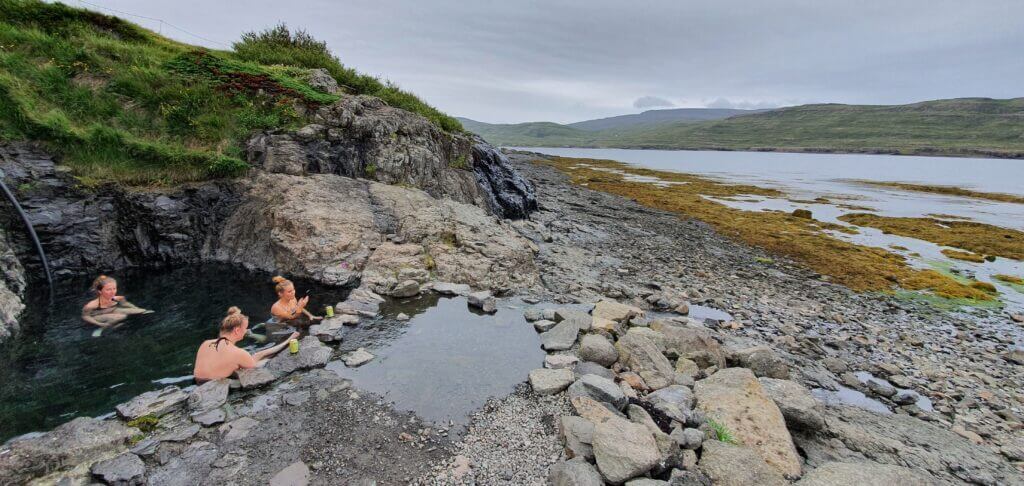
Hellulaug hot spring
The entire bathing experience was very nice. The water was pleasantly hot, but not too hot (some 34-36°C). It felt really comfortable to soak in the pool, while the rain poured down. Additionally, view from the hot spring is very nice, because of its location in the fjord. So you’re basically sitting in the hot spring looking at the fjord.
Two local girls left a pool after a while and a married local couple arrived to replace them. They taught us how to pronounce some Icelandic words and pointed out that we’ve seen probably much more of Iceland in 12 days than they’ve seen in their entire life.
Road 60 – south – Vestfjarðarvegur towards Kinnarstaðir
Worth visiting even with bad weather: yes, probably Interesting index: 2 – great (1-amazing, 2-great, 3-nice)
This part of Vestfjardarvegur is very versatile. Some parts are very well paved, some parts are semi-paved, some of them lead zig-zag through a mountainous area and some of them are a beautiful coastal drive. It rained persistently, while we drove on road 60, so we didn’t make any stops, nor photos. Nevertheless, we enjoyed (or at least I enjoyed :)) the drive anyway.
It should be doable also by 2wd car in the summer, just for some rougher parts (or in case of rougher weather) it’s an advantage to have a 4wd.
SjávarSmiðan
19:15
The closest campsites in the southeast part of Westfjords were two camping spots in Reykhólar. One of them had really bad reviews on Google maps so we opted for the second one called Sjavarsmidan. This campsite was supposed to be nice and have seaweed hot springs included in the entrance.
We arrived there after 7 pm and were the only guests of the campsite. There was literally no one, not even a camp manager. Seaweed baths were closed. There was a phone number on a door sticker. I called and the manager of the campsite replied that the campsite is opened, and if we want to camp we can and he would come to collect an entrance fee.
Well, it seemed a bit strange to be alone in the entire campsite. Moreover, the rain kept pouring and there was no kitchen area, so we didn’t have a place to prepare our dinner. Because of the above-mentioned reasons, we decided to continue to the next campsite with some good reviews in the direction of Reykjavik.
Búðardalur camping Dalakot
20:30-
We arrived at the campsite Budardalur at half-past 8 and the campsite was already almost full. The weather forecast for the night looked ugly with some heavy rain and strong wind. Hence, we didn’t want to park our car at the open camping space and found a spot in the leeward. That meant, that we were surrounded by a kitchen area, trees and another campervan. With the experience of already getting our tent wet once, we were much more careful this time.
Day 13
We slept hard during our last night and luckily the wind and rain were bearable. What followed was the most unpleasant part of our journey. We had to pack everything up, drive 3 hours towards Keflavik, return the car and flight back in the Covid times being very unpleasant ones for flying.
Nevertheless, the entire trip was more than just worth every while of planning and every euro spent.
Videos

